inbox and environment news: Issue 517
November 7 - 13, 2021: Issue 517
Manly Stormwater
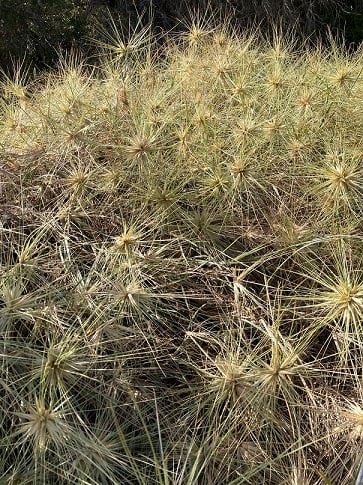 Pittwater Natural Heritage Association (PNHA): Pittwater Nature No:8
Pittwater Natural Heritage Association (PNHA): Pittwater Nature No:8
Native Bees - Community Webinars
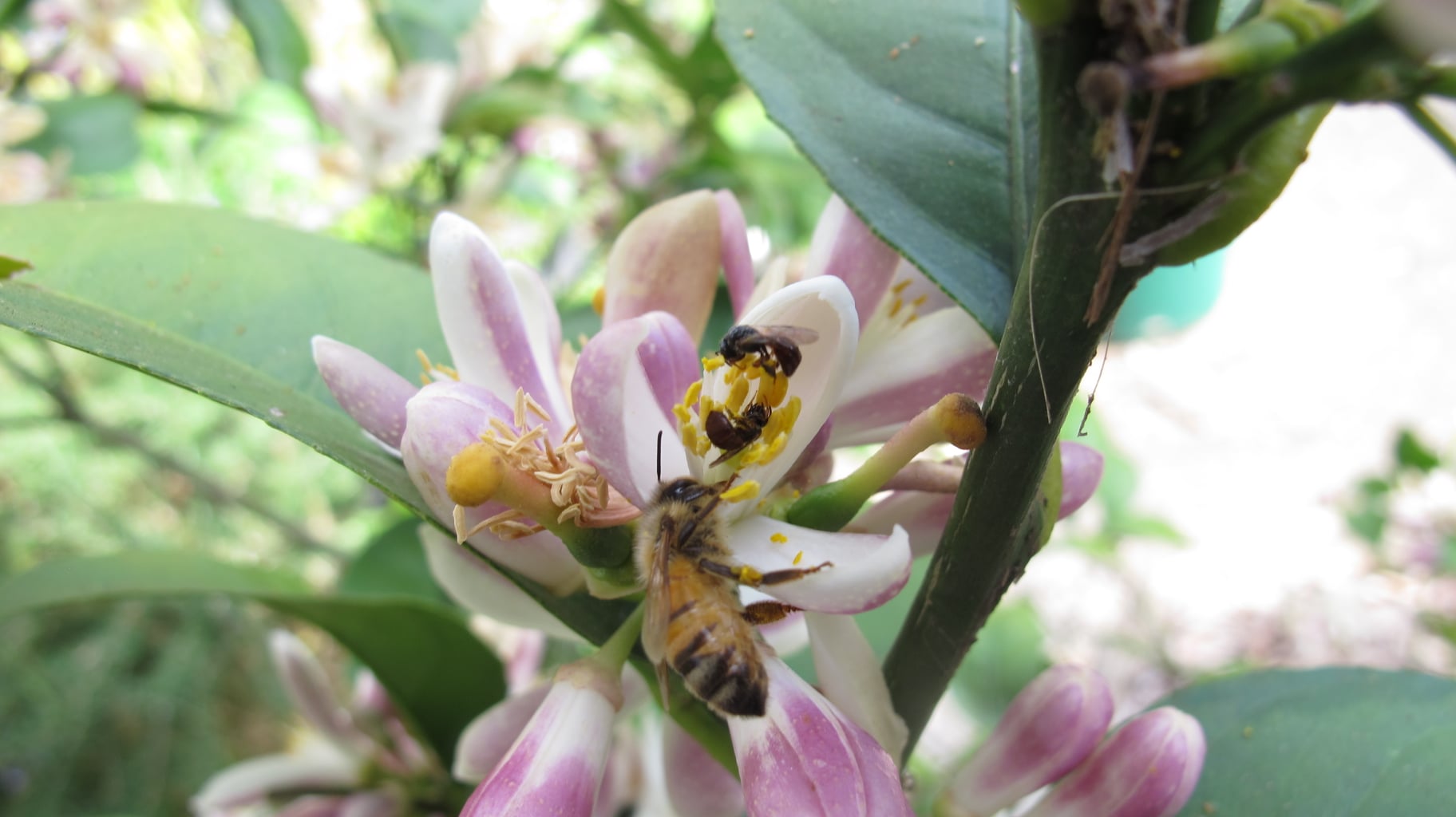
Avalon Preservation Association AGM 2021

Speaker: Angus Gordon OAM
“Global warming, is it real?”
The 2021 Annual General Meeting for Avalon Preservation Association (APA) will be held from 7.00pm on Thursday 11 November 2021 at the Avalon Beach surf life saving club.
Our special guest speaker is Angus Gordon OAM. Angus will talk on the controversial and very timely topic “Global Warming, Is it Real?”
Angus was General Manager of Pittwater Council from 1996 to 2005. He has a Master’s degree in Water and Coastal Engineering. In 2018 Angus received the Medal of the Order of Australia for “service to environmental management and planning, and to the community”.
Over the past 40 years he has undertaken projects in all states of Australia and in a number of overseas countries in coastal engineering, coastal zone management and flood management and engineering. Angus has served as a UN expert and was tasked with the development of the NSW Coastal Protection Act.
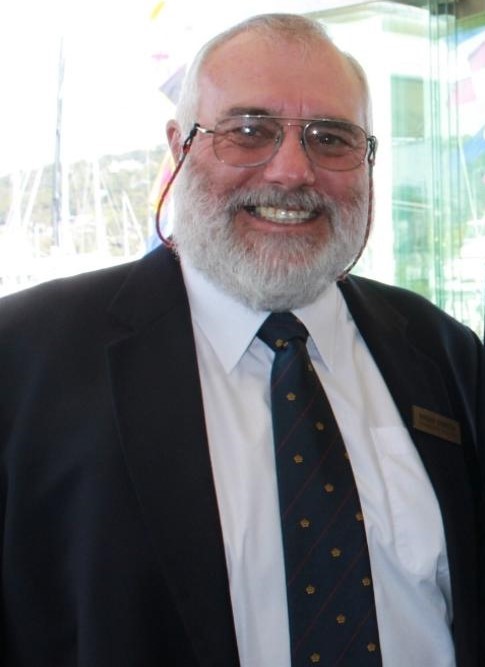
Angus Gordon OAM. AJG pic.

Speaker: Angus Gordon OAM
“Global warming, is it real?”
The 2021 Annual General Meeting for Avalon Preservation Association (APA) will be held from 7.00pm on Thursday 11 November 2021 at the Avalon Beach surf life saving club.
Our special guest speaker is Angus Gordon OAM. Angus will talk on the controversial and very timely topic “Global Warming, Is it Real?”
Angus was General Manager of Pittwater Council from 1996 to 2005. He has a Master’s degree in Water and Coastal Engineering. In 2018 Angus received the Medal of the Order of Australia for “service to environmental management and planning, and to the community”.
Over the past 40 years he has undertaken projects in all states of Australia and in a number of overseas countries in coastal engineering, coastal zone management and flood management and engineering. Angus has served as a UN expert and was tasked with the development of the NSW Coastal Protection Act.

Due to the current health situation, APA will hold the AGM strictly in line with the NSW Public Health Orders in force at the time. This may restrict the number of members and guests able to attend and guests may need to check in with a QR code, wear facemasks and show that they have been fully vaccinated.
Wild Pollinator Count: November 14-21
November 2021 Forum For Friends Of Narrabeen Lagoon Catchment: Fishing Bats And Water Rats (Rakali)
.jpg?timestamp=1631741816240)
.jpg?timestamp=1631741908384)
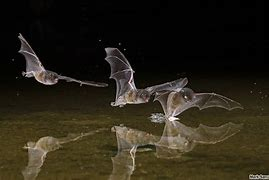
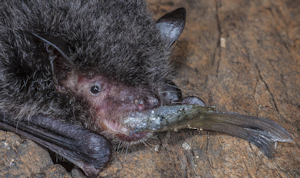
Draft Marine Park Management Plan Released
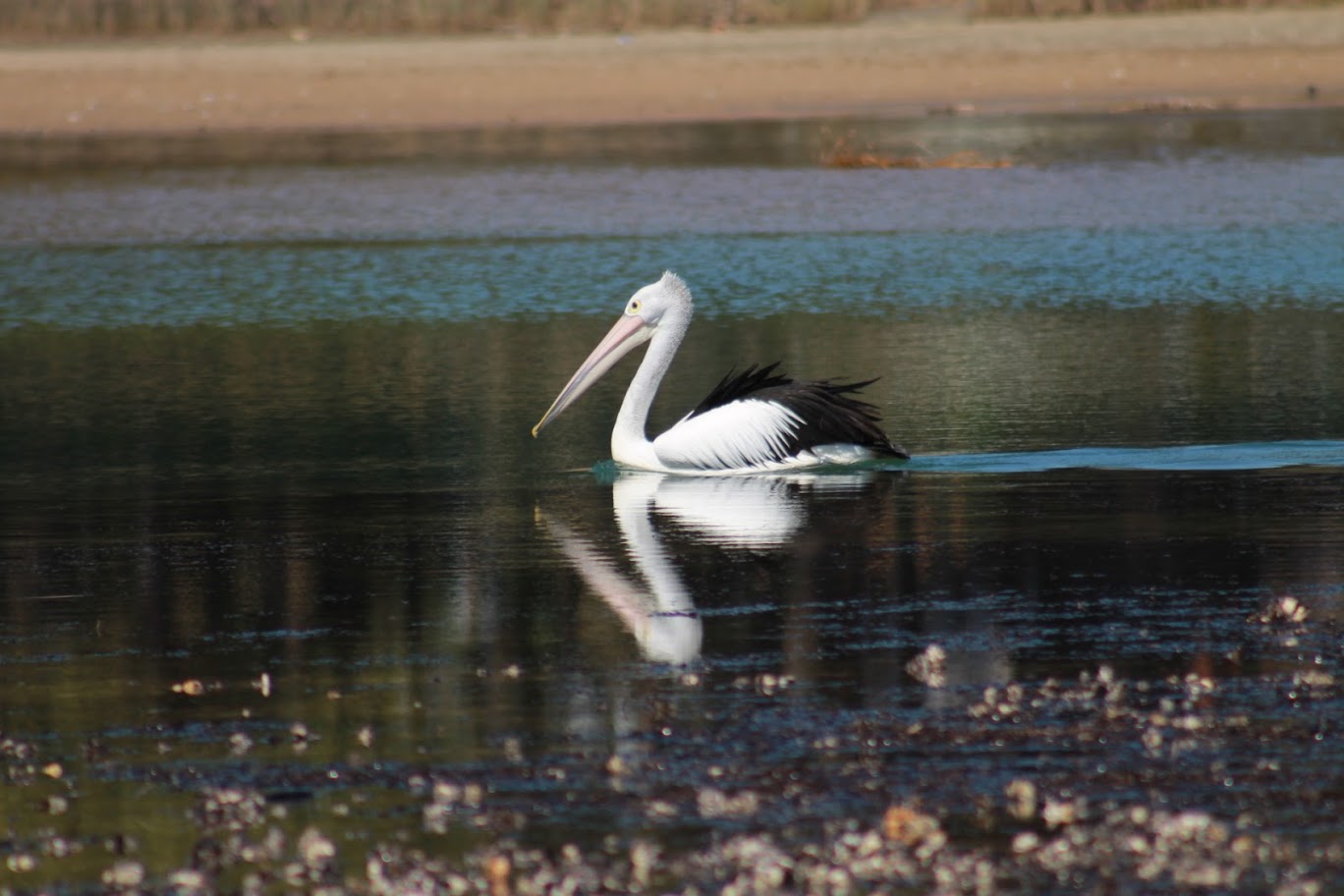
Home Gardeners In Sydney Basin To Help Protect Local Fruit And Vegetable Production: Get Your Free Sticky Trap
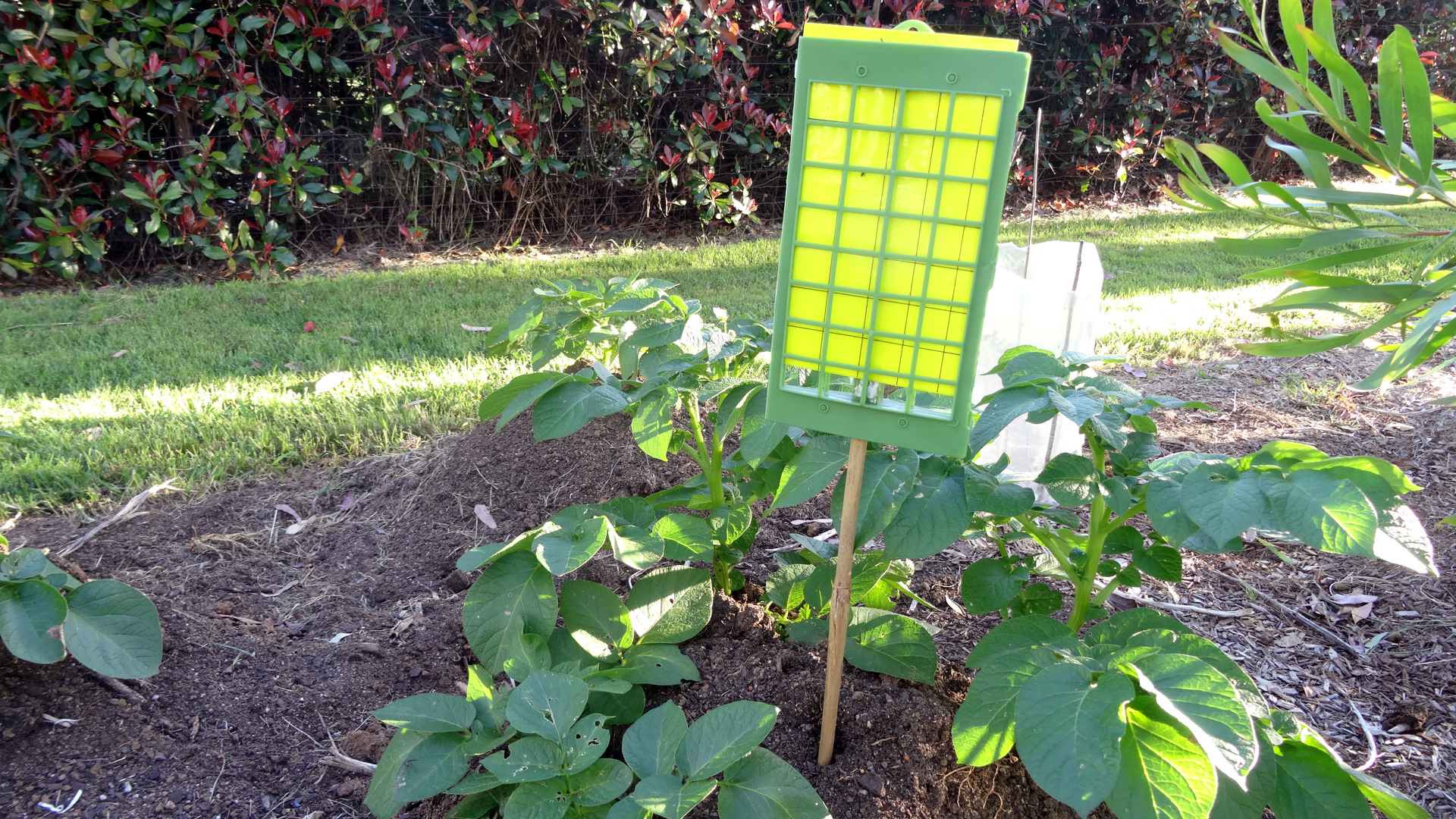
Migratory Bird Season
Baby Wildlife Season

Harry the ringtail possum. Sydney Wildlife photo
Winning Hawkesbury Photos Make 2022 Calendar

Torres Strait Peoples Suing Australian Government Over Climate Change Inaction
Illegal Bike Track At Mount Keira To Be Closed And Rehabilitated
NSW Land Management Report 2018-2020
Land Clearing In NSW Must End For Australia To Meet Its New COP26 Deforestation Pledge
Return Of Indigenous Farming, Foods And Fire Could Help Regenerate Australia
- Ensure a seed or tree is planted on your behalf where it’s needed most through one of our on-ground projects. Trees/forests are being planted across NSW, QLD and Victoria.
- Help make a difference and restore vital homes for our wildlife and establish a network of habitat corridors.
- Support our advocacy work for stronger laws and protections for koalas and the places they call home.
- Get first access to stories straight from-the-field about how your support is helping to Regenerate Australia.
Billions Of Dollars From Overseas Is Helping Exploit Australian Fossil Fuels
One Year On: Royal Commission Recommendations Left Burning
PM Presented An Unbelieved Climate Con To COP26: Climate Council
Legislating Emissions Targets Would Be A Step Forward For NSW
$40 Million Clean Technology Grants Open
- electrification and energy systems
- primary industry and land management
- powerfuels, including hydrogen.
Wildlife First Response Training For Firefighters
‘Bunyip Bird’ Takes Centre Stage At 2022 Australian Bittern Summit
- Coleambally Irrigation Cooperative Limited
- Murray Irrigation Limited
- Murrumbidgee Irrigation Limited
- Commonwealth Environmental Water Office
- Murray Darling Basin Authority
- Agrifutures
- Rice Growers Association of Australia
- Murray Darling Wetlands Working Group
- Charles Sturt University
- Yenda Producers
- Department of Planning, Industry and Environment
- Leeton Shire Council.
.jpg?timestamp=1636193272929)
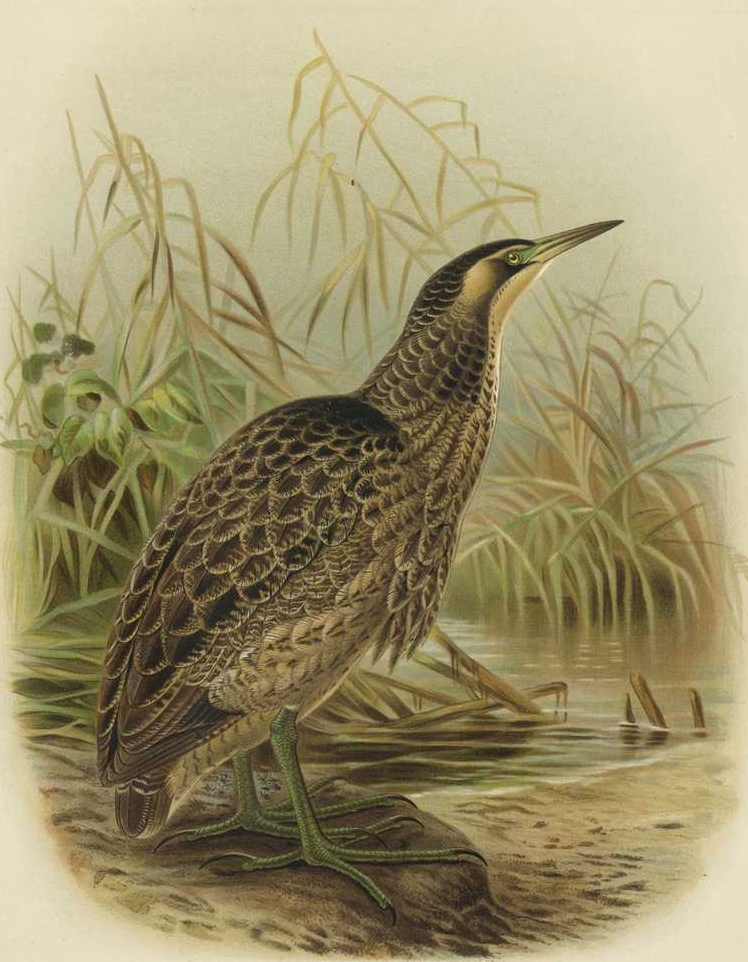
Western Sydney Wildlife Crossing A Success
 “The most frequent visitors are a local population of Sugar Gliders, who are using the crossing to travel from Surveyors Creek into Mulgoa Nature Reserve.
“The most frequent visitors are a local population of Sugar Gliders, who are using the crossing to travel from Surveyors Creek into Mulgoa Nature Reserve.St John’s Wort Spreading In Warrumbungle Shire
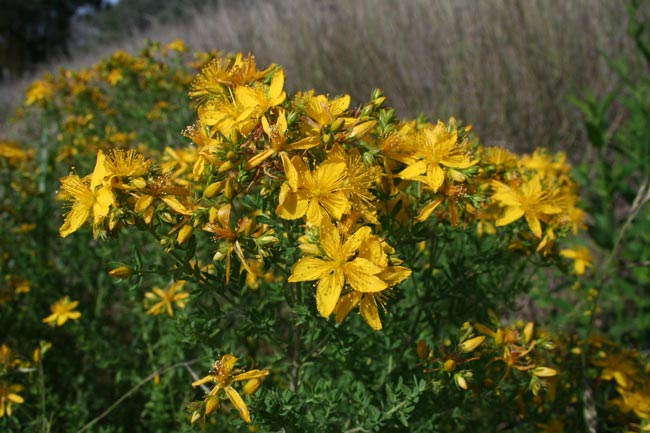
ECNT And EDO Take Keith Pitt’s Fracking Grants To Federal Court
Fracking Companies Targeting Polluting Shale Oil On Lake Eyre Basin Floodplains
Early Decision Opposes Bundaberg Coal Mine Proposal
Rylstone Residents Celebrate Recommendation Against Releasing Their Backyard To New Coal Mining
Dial-A-Dump Fined For Tracking Sediment From Eastern Creek Site
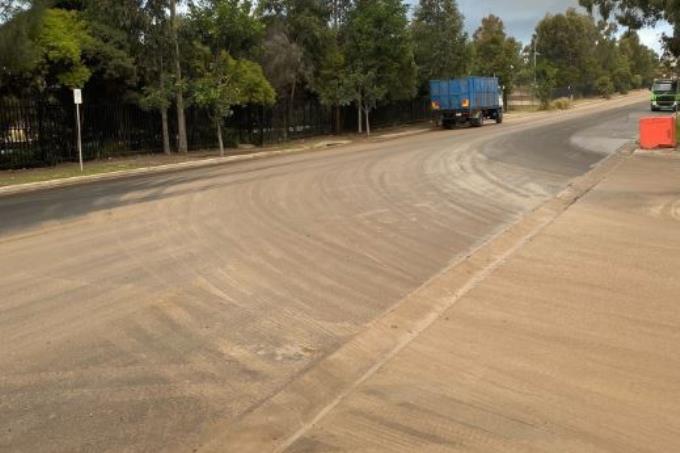 Failure to stop dirt and sediment from allegedly being tracked from an industrial site out onto Western Sydney roadways has resulted in Dial-a-Dump (EC) Pty Ltd receiving $30,000 in fines from the NSW Environment Protection Authority (EPA).
Failure to stop dirt and sediment from allegedly being tracked from an industrial site out onto Western Sydney roadways has resulted in Dial-a-Dump (EC) Pty Ltd receiving $30,000 in fines from the NSW Environment Protection Authority (EPA).Warragamba Dam Raising Project EIS On Public Exhibition
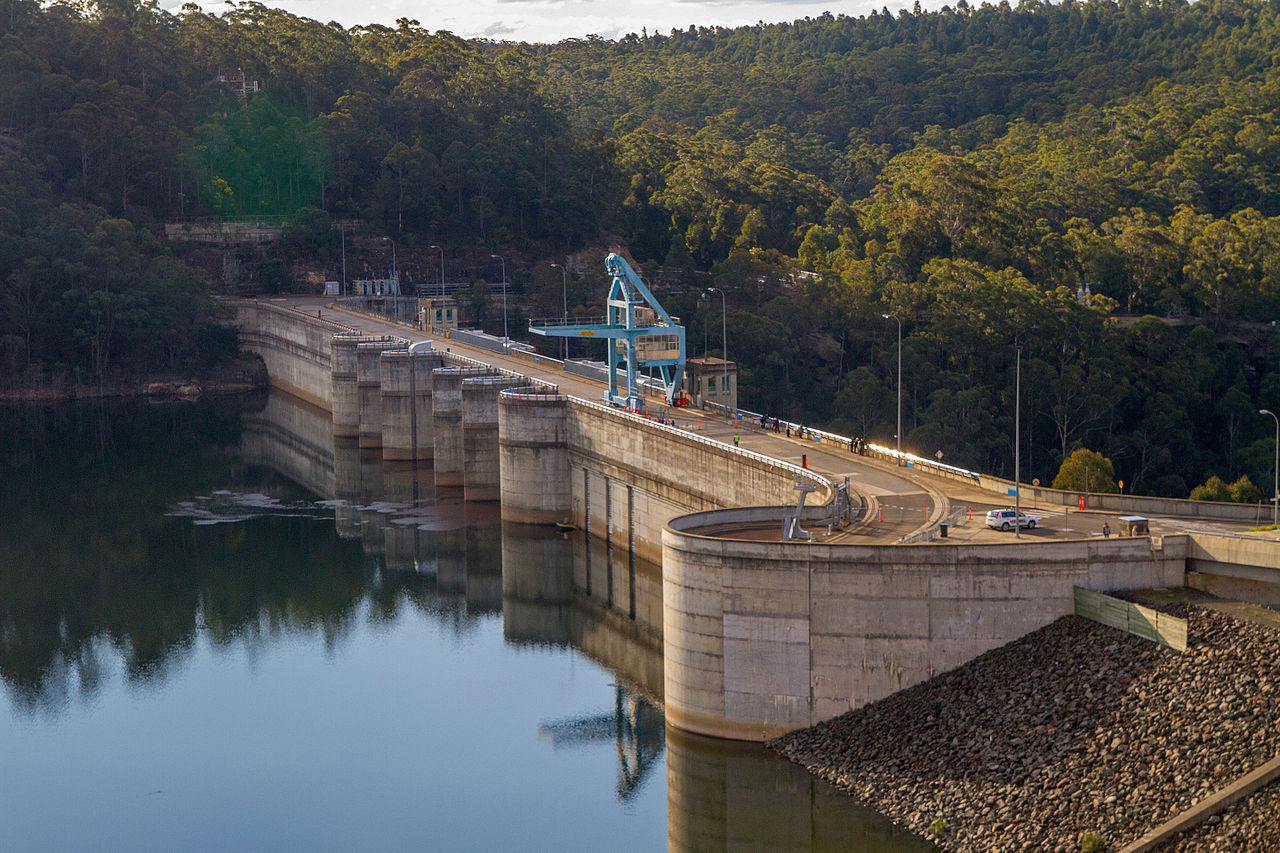
NSW Government Plan To Revitalise Peat Island And Mooney Mooney Released
- Nearly 270 new homes at Mooney Mooney to deliver more housing supply,
- Retention of nine unlisted historical buildings on the island, and four on the mainland, to be restored and used for new community and commercial opportunities,
- New retail and café or restaurant opportunities,
- Approximately 9.65 hectares of open space, including opportunities for walking and cycling tracks, parklands and recreational facilities,
- Retention of the chapel and surrounding land for community use, and
- 10.4 hectares of bushland dedicated as a conservation area.
COP26: it’s half-time at the crucial Glasgow climate change summit – and here’s the score

The first week of the United Nations climate talks in Glasgow are drawing to a close. While there’s still a way to go, progress so far gives some hope the Paris climate agreement struck six years ago is working.
Major powers brought significant commitments to cut emissions this decade and pledged to shift toward net-zero emissions. New coalitions were also announced for decarbonising sectors of the global economy. These include phasing out coal-fired power, pledges to cut global methane emissions, ending deforestation and plans for net-zero emissions shipping.
The two-week summit, known as COP26, is a critical test of global cooperation to tackle the climate crisis. Under the Paris Agreement, countries are required, every five years, to produce more ambitious national plans to reduce emissions. Delayed one year by the COVID pandemic, this year is when new plans are due.
Pledges made at the summit so far could start to bend the global emissions curve downwards. Credible projections from an expert team, including Professor Malte Meinshausen at the University of Melbourne, suggest if new pledges are fully funded and met, global warming could be limited to to 1.9℃ this century. The International Energy Agency came to a similar conclusion.
This is real progress. But the Earth system reacts to what we put in the atmosphere, not promises made at summits. So pledges need to be backed by finance, and the necessary policies and actions across energy and land use.
A significant ambition gap on emissions reduction also remains, and more climate action is needed this decade to avoid catastrophic warming. Achieving necessary emissions reductions by 2030 will be a key focus of the second week of the Glasgow talks, especially as global emissions are projected to rebound strongly in 2021 (after the drop induced last year by COVID-19).
For its part, Australia contributed virtually nothing to global efforts in Glasgow. Alone among advanced economies, Australia set no new target to cut emissions this decade. If anything, this week added to Australia’s reputation as a member of a small and isolated group of countries - with the likes of Saudi Arabia and Russia - resisting climate action.
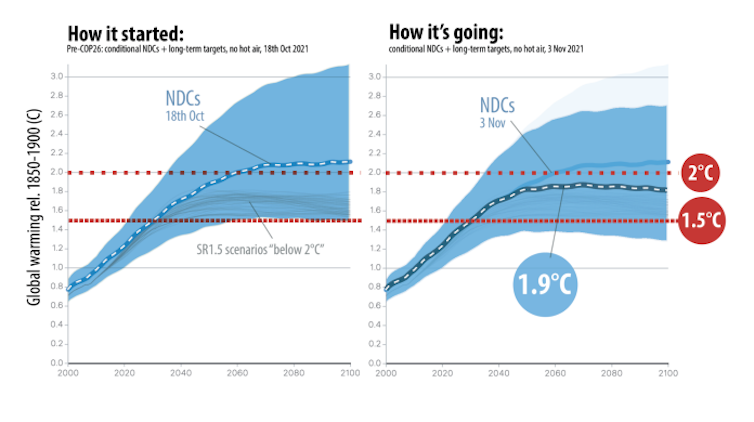
Global Momentum: What Did Major Powers Bring To Glasgow?
Since the last UN climate summit we’ve seen a worldwide surge in momentum toward climate action. More than 100 countries - accounting for more than two-thirds of the global economy - have set firm dates for achieving net-zero emissions.
Perhaps more importantly, in the lead up to the Glasgow summit the world’s advanced economies - including the United States, the United Kingdom, the European Union, Japan, Canada, South Korea and New Zealand - all strengthened their 2030 targets. The G7 group of countries pledged to halve their collective emissions by 2030.
Major economies in the developing world also brought new commitments to COP26. China pledged to achieve net-zero emissions by 2060 and strengthened its 2030 targets. It now plans to peak emissions by the end of the decade.
This week India also pledged to achieve net-zero by 2070 and ramp up installation of renewable energy. By 2030, half of India’s electricity will come from renewable sources.
The opening days of COP26 also saw a suite of new announcements for decarbonising sectors of the global economy. The UK declared the end of coal was in sight, as it launched a new global coalition to phase out coal-fired power.
More than 100 countries signed on to a new pledge to cut methane emissions by 30% by 2030. More than 120 countries also promised to end deforestation by 2030.
The US also joined a coalition of countries that plans to achieve net-zero emissions in global shipping.
But this week the developed world fell short of fulfilling a decade-old promise - to deliver US$100 billion each year to help poorer nations deal with climate impacts.
Fulfilling commitments on climate finance will be critically important for building trust in the talks. For its part, Australia pledged an additional A$500 million in climate finance to countries in Southeast Asia and the Pacific – a figure well short of Australia’s fair share of global efforts. Australia also refused to rejoin the Green Climate Fund.
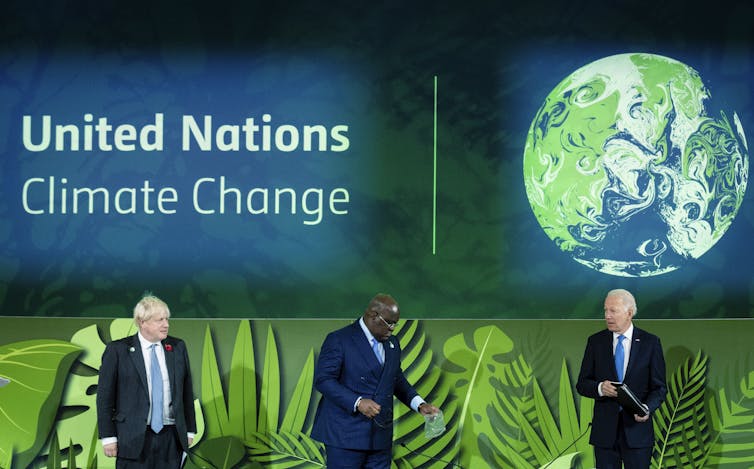
Missing The Moment: The Australian Way
While the rest of the world is getting on with the race to a net-zero emissions economy, Australia is barely out of the starting blocks. Australia brought to Glasgow the same 2030 emissions target that it took to Paris six years ago - even as key allies pledged much stronger targets.
Prime Minister Scott Morrison arrived with scant plans to accompany his last-minute announcement on net-zero by 2050. The strategy titled The Australian Way, which comprised little more than a brochure, failed to provide a credible pathway to that target. It was met with derision across the world.
On the way to Glasgow, at the G20 leaders meeting in Rome, Australia blocked global momentum to reduce emissions by resisting calls for a phase out of coal power. Australia also refused to sign on to the global pledge on methane.
Worse still, Australia is using COP26 to actively promote fossil fuels. Federal Energy Minister Angus Taylor says the summit is a chance to promote investment in Australian gas projects, and Australian fossil fuel company Santos was prominently branded at the venue’s Australia Pavilion.
The federal government is promoting carbon capture and storage as a climate solution, despite it being widely regarded as a licence to prolong the use of fossil fuels. The technology is also eye-wateringly expensive and not yet proven at scale.

The Closing Stretch
Week one in Glasgow has delivered more climate action than the world promised in Paris six years ago. However, the summit outcomes still fall well short of what is required to limit warming to 1.5℃. Attention will now turn to negotiating an outcome to further increase climate ambition this decade.
Vulnerable countries have proposed countries yet to deliver enhanced 2030 targets be required to come back in 2022, well before COP27, with stronger targets to cut emissions.
This week, the United States rejoined the High Ambition Coalition, a group of countries from across traditional negotiating blocs in the UN climate talks. Led by the Marshall Islands, the group was crucial in securing the 2015 Paris Agreement.
In Glasgow, this coalition is pressing for an outcome that will keep the world on track to limiting warming to 1.5℃.
But significant differences persist between the US and China. Many developing countries want to see more commitment to climate finance from wealthy nations before they will pledge new targets. Can consensus be reached in Glasgow? We’ll be watching the negotiations closely next week to find out.
Wesley Morgan, Research Fellow, Griffith Asia Institute and Climate Council researcher, Griffith University
This article is republished from The Conversation under a Creative Commons license. Read the original article.
5 major heatwaves in 30 years have turned the Great Barrier Reef into a bleached checkerboard
Terry Hughes, James Cook University and Sean Connolly, Smithsonian InstitutionJust 2% of the Great Barrier Reef remains untouched by bleaching since 1998 and 80% of individual reefs have bleached severely once, twice or three times since 2016, our new study reveals today.
We measured the impacts of five marine heatwaves on the Great Barrier Reef over the past three decades: in 1998, 2002, 2016, 2017 and 2020. We found these bouts of extreme temperatures have transformed it into a checkerboard of bleached reefs with very different recent histories.
Whether we still have a functioning Great Barrier Reef in the decades to come depends on how much higher we allow global temperatures to rise. The bleaching events we’ve already seen in recent years are a result of the world warming by 1.2℃ since pre-industrial times.
World leaders meeting at the climate summit in Glasgow must commit to more ambitious promises to drastically cut greenhouse gas emissions. It’s vital for the future of corals reefs, and for the hundreds of millions of people who depend on them for their livelihoods and food security.
Coral In A Hotter Climate
The Great Barrier Reef is comprised of more than 3,000 individual reefs stretching for 2,300 kilometres, and supports more than 60,000 jobs in reef tourism.
Under climate change, the frequency, intensity and scale of climate extremes is changing rapidly, including the record-breaking marine heatwaves that cause corals to bleach. Bleaching is a stress response by overheated corals, where they lose their colour and many struggle to survive.
If all new COP26 pledges by individual countries are actually met, then the projected increase in average global warming could be brought down to 1.9℃. In theory, this would put us in line with the goal of the Paris Agreement, which is to keep global warming below 2℃, but preferably 1.5℃, this century.
However, it is still not enough to prevent the ongoing degradation of the world’s coral reefs. The damage to coral reefs from anthropogenic heating so far is very clear, and further warming will continue to ratchet down reefs throughout the tropics.
Read more: Not declaring the Great Barrier Reef as 'in danger' only postpones the inevitable
Ecological Memories Of Heatwaves
Most reefs today are in early recovery mode, as coral populations begin to re-build since they last experienced bleaching in 2016, 2017 and 2020. It takes about a decade for a decent recovery of the fastest growing corals, and much longer for slow-growing species. Many coastal reefs that were severely bleached in 1998 have never fully recovered.
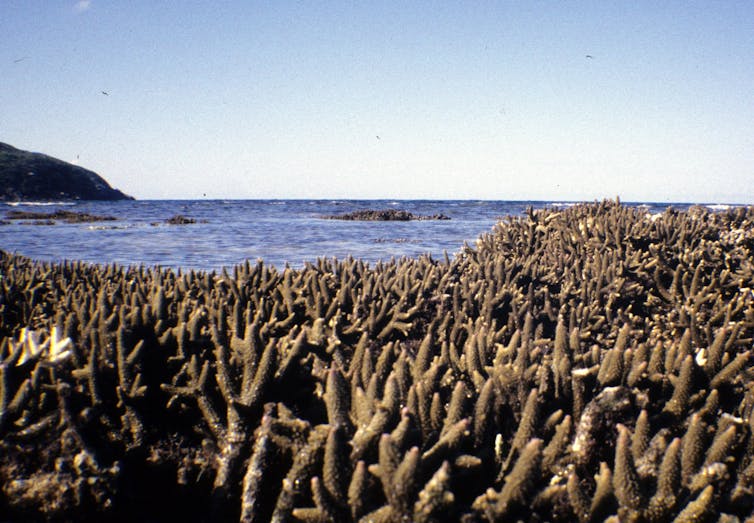
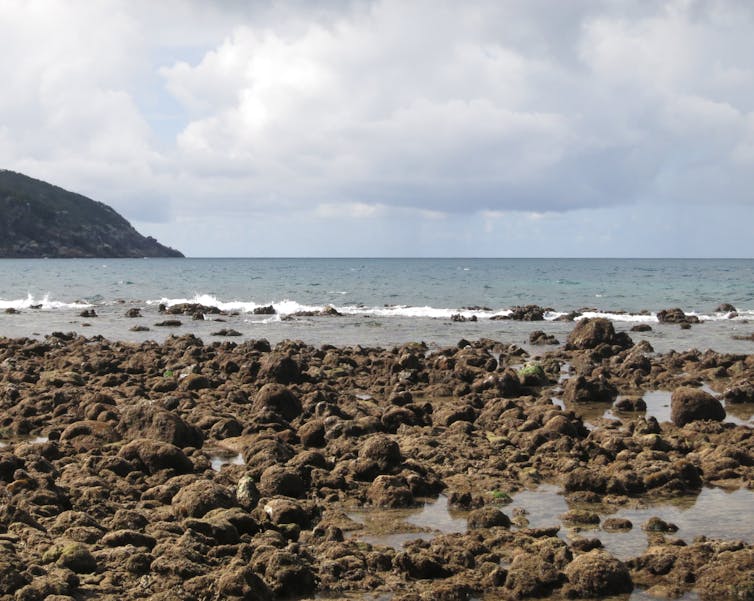
Each bleaching event so far has a different geographic footprint. Drawing upon satellite data, we measured the duration and intensity of heat stress that the Great Barrier Reef experienced each summer, to explain why different parts were affected during all five events.
The bleaching responses of corals differed greatly in each event, and was strongly influenced by the recent history of previous bleaching. For this reason, it’s important to measure the extent and severity of bleaching directly, where it actually occurs, and not rely exclusively on water temperature data from satellites as an indirect proxy.
We found the most vulnerable reefs each year were the ones that had not bleached for a decade or longer. On the other hand, when successive episodes were close together in time (one to four years apart), the heat threshold for severe bleaching increased. In other words, the earlier event had hardened regions of the Great Barrier Reef to subsequent impacts.
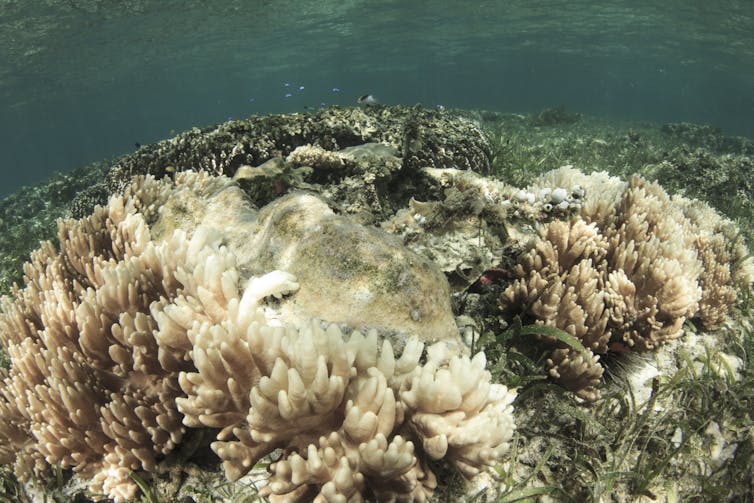
For example, in 2002 and 2017, it took much more heat to trigger similar levels of bleaching that were measured in 1998 and 2016. The threshold for bleaching was much higher on reefs that had experienced an earlier episode of heat stress.
Similarly, southern corals, which escaped bleaching in 2016 and 2017, were the most vulnerable in 2020, compared to central and northern reefs that had bleached severely in previous events.
Many different mechanisms could generate these historical effects, or ecological memories. One is heavy losses of the more heat-susceptible coral species during an earlier event – dead corals don’t re-bleach.
Read more: We just spent two weeks surveying the Great Barrier Reef. What we saw was an utter tragedy
Nowhere Left To Hide
Only a single cluster of reefs remains unbleached in the far south, downstream from the rest of the Great Barrier Reef, in a small region that has remained consistently cool through the summer months during all five mass bleaching events. These reefs lie at the outer edge of the Great Barrier Reef, where upwelling of cool water may offer some protection from heatwaves, at least so far.
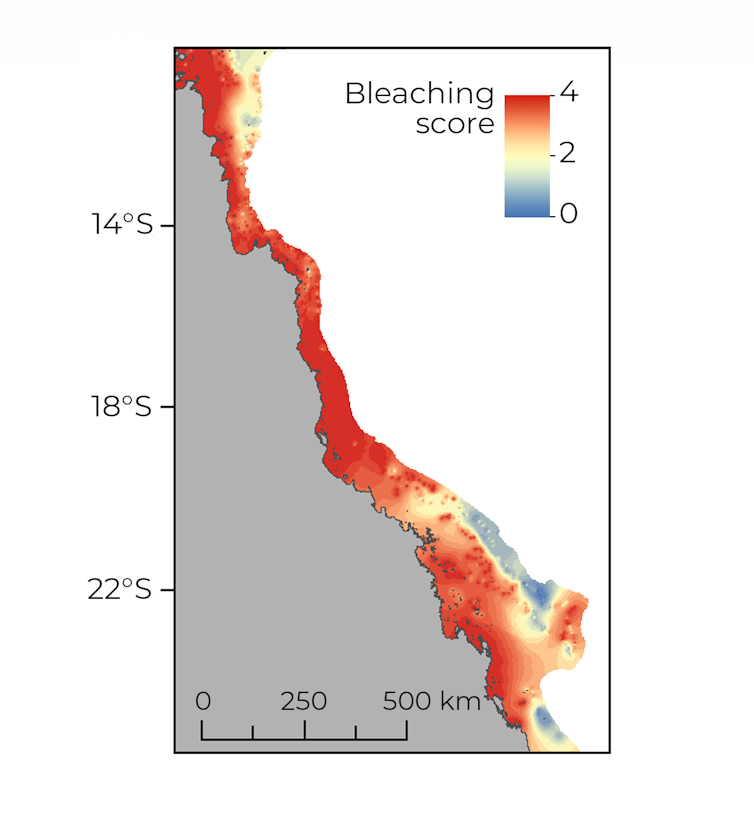
In theory, a judiciously placed network of well-protected, climate-resistant reefs might help to repopulate the broader seascape, if greenhouse gas emissions are curtailed to stabilise temperatures later this century.
But the unbleached southern reefs are too few in number, and too far away from the rest of the Great Barrier Reef to produce and deliver sufficient coral larvae, to promote a long-distance recovery.
Instead, future replenishment of depleted coral populations is more likely to be local. It would come from the billions of larvae produced by recovering adults on nearby reefs that have not bleached for a while, or by corals inhabiting reef in deeper waters which tend to experience less heat stress than those living in shallow water.
Read more: 'This situation brings me to despair': two reef scientists share their climate grief
Future recovery of corals will increasingly be temporary and incomplete, before being interrupted again by the inevitable next bleaching event. Consequently, the patchiness of living coral on the Great Barrier Reef will increase further, and corals will continue to decline under climate change.
Our findings make it clear we no longer have the luxury of studying individual climate-related events that were once unprecedented, or very rare. Instead, as the world gets hotter, it’s increasingly important to understand the effects and combined outcomes of sequences of rapid-fire catastrophes.![]()
Terry Hughes, Distinguished Professor, James Cook University and Sean Connolly, Research Biologist, Smithsonian Institution
This article is republished from The Conversation under a Creative Commons license. Read the original article.
Australia’s refusal to sign a global methane pledge exposes flaws in the term ‘net-zero’
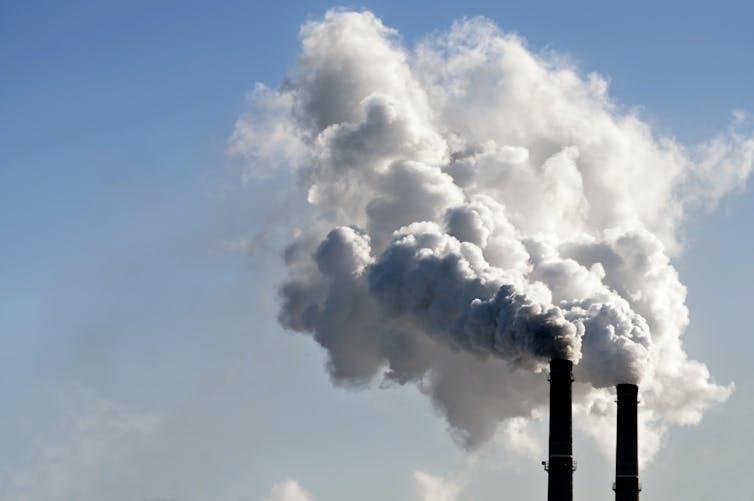
At the United Nations climate summit in Glasgow, more than 90 nations signed a global pledge led by the United States and United Kingdom to cut methane emissions. However, Australia was not among them.
China, Russia, India and Iran also declined to sign the pledge, which aims to slash methane emissions by 30% before 2030.
Methane is emitted in coal and gas production, from livestock and other agricultural activity, and when organic waste breaks down in landfill.
Almost half of Australia’s annual methane emissions come from the agriculture sector. Defending the federal government’s decision, Energy and Emissions Reduction Minister Angus Taylor said Australia had pledged net-zero greenhouse gas emissions by 2050 and would not set specific targets for each sector.
Days out from COP26, National Party leader Barnaby Joyce had claimed signing the pledge would be a disaster for coal mining and agriculture, saying “the only way you can get your 30% by 2030 reduction in methane on 2020 levels would be to grab a rifle and go out and start shooting your cattle”.
Australia’s position on the pledge is inconsistent with methane reductions the Intergovernmental Panel on Climate Change (IPCC) says are required to keep Earth below 1.5℃ warming this century.
The debate also highlights how the shorthand phrase “net-zero emissions” conceals and distorts the real challenges in avoiding dangerous climate change.
It focuses attention on the wrong time frame for action – the next decade is far more important for climate action than 2050. It also addresses the means of action – emissions reduction – rather than the desired goal, which is to avoid dangerous climate change.
And importantly, simply through delaying action, the world could feasibly reduce emissions to net-zero by 2050, but still fail to meet the goals of the Paris Agreement – keeping average global temperature rise below either 1.5℃ or 2℃ this century.
Read more: COP26: a global methane pledge is great – but only if it doesn't distract us from CO₂ cuts
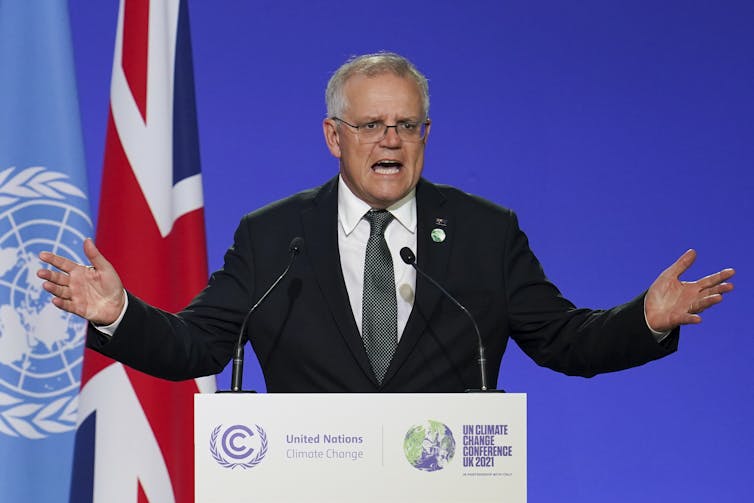
Net-Zero Is Both Too Much, And Not Enough
The IPCC report released in August painted a clear picture of how different trajectories for various greenhouse gases translate to global temperature increases.
Carbon dioxide (CO₂) emissions last a very long time in the atmosphere so they accumulate. Consequently, net CO₂ emissions need to decline sharply as soon as possible if we’re to limit temperatures to 1.5℃ or 2℃ above pre-industrial levels.
However, CO₂ emissions not only need to reach net-zero – the IPCC says CO₂ emissions need to go “net-negative”. This will require a massive scaling up of methods and technologies to remove existing CO₂ in the atmosphere.
In other words, when it comes to CO₂, net-zero is not enough. It is a way point, not the end point.
So how do we remove CO₂ from the atmosphere? Some methods, such as mass tree planting, are already widely implemented. Some are difficult to implement at scale, such as substantial increases in soil carbon.
Others are in the exploratory stages including incorporating captured CO₂ into building products and high-value materials or in the ocean.
Each option has advantages, disadvantages and limits. The “net-zero by 2050” terminology obscures this complexity. It also conceals the need for crucial discussions about feasibility, governance and support for research and development that’s needed now.
Meanwhile, the situation is quite different for shorter-lived gases such as methane and nitrous oxide. In those cases, going all the way to net-zero is not needed to meet the Paris goals.
According to the IPCC report, an illustrative scenario consistent with 1.5℃ warming would involve methane emission reductions of about 30% by 2030, 50% by 2050 and just over 60% by 2100.
This is consistent with the global methane pledge signed at COP26 overnight. For nitrous oxide, the illustrative reductions would be about 30% by 2050.
So, for methane and nitrous oxide, net-zero is too much.
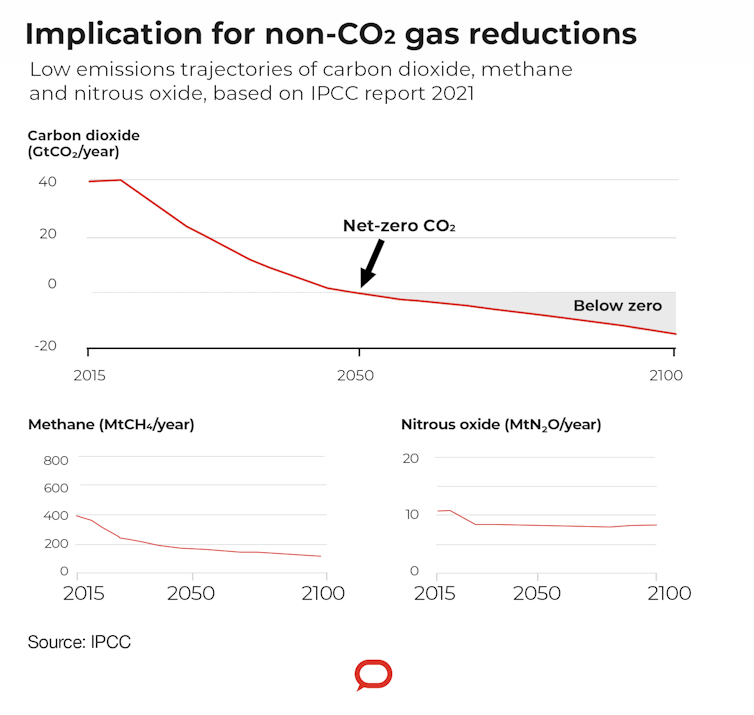
Targets Based On Science
It should be noted, to keep temperature rise to 1.5℃, there are many possible combinations of emission-reduction trajectories for various greenhouse gases. The extent to which CO₂, methane or nitrous oxide is reduced is interchangeable and the final mix will be a function of political decisions.
A clear and integrated assessment of the economic, environmental and social consequences of different emission-reduction pathways is needed to inform those decisions. Without that, inefficient and inequitable economic responses may result.
For example, methane (from livestock) and nitrous oxide (from fertiliser use) make up a high proportion of agriculture emissions. But options for completely stopping these emissions are limited.
Farmers could offset their emissions by planting trees or rehabilitating vegetation on their properties to increase carbon stores. But this would prevent them from selling those emissions reductions on carbon markets, thus removing a potential source of farm income.
So an economy-wide target of net-zero for all key greenhouse gases might mean agriculture must make far more effort in emissions reduction, at much greater cost, than other sectors which largely emit CO₂ and where decarbonisation options are more readily available.
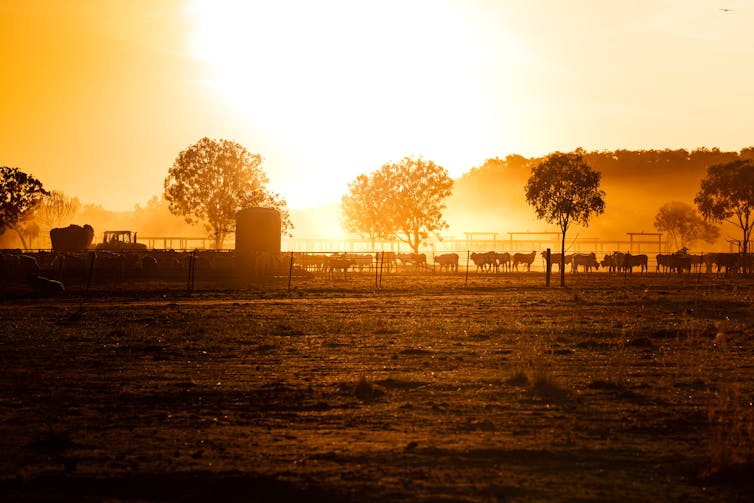
New Zealand has recognised this, and treats agricultural emissions separately.
Carving agriculture out of national emissions-reduction goals would place a greater requirement to act onto other sectors. For example, emission reductions in the transport sector may have to be greater than otherwise, to compensate for the lack of progress in agriculture.
But is isolating agriculture from emission reductions necessary? A recent study assessed new emission reduction options for livestock, including several approaches that together may reduce emissions at the rate required by the methane pledge. They involve more efficient production, technological advances, changes in demand for livestock-related products and land-based carbon storage.
These are approaches already being adopted by industry groups and farmers.
Towards ‘Paris-Aligned’
Targets for methane and nitrous oxide reductions should be set using the IPCC science – and don’t have to be set at net-zero. That would leave sectors emitting these gases with a feasible (but still challenging) pathway to reducing emissions in line with the Paris goals.
And where appropriate, we should start describing effective climate action as being “Paris-aligned”. Clearly, over-use of the term “net-zero emissions” misdirects attention from where it’s needed.
Read more: The clock is ticking on net-zero, farmers must not get a free pass ![]()
Mark Howden, Director, ANU Institute for Climate, Energy and Disaster Solutions, Australian National University
This article is republished from The Conversation under a Creative Commons license. Read the original article.
COP26: global deforestation deal will fail if countries like Australia don’t lift their game on land clearing
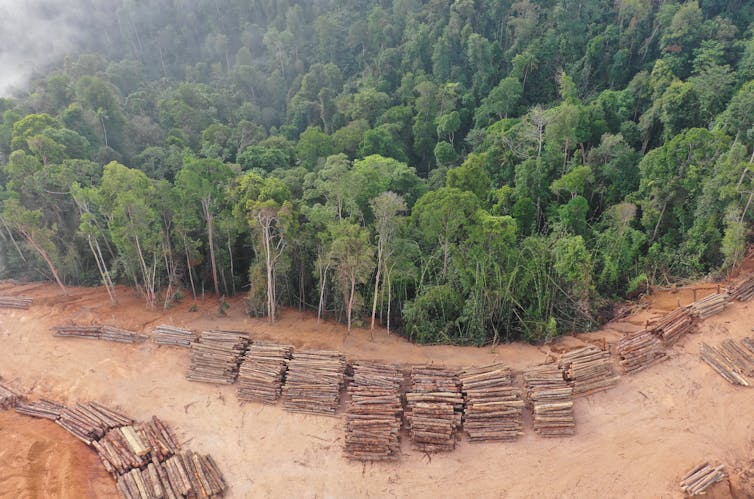
At the Glasgow COP26 climate talks overnight, Australia and 123 other countries signed an agreement promising to end deforestation by 2030.
The declaration’s signatories, which include global deforestation hotspots such as Brazil, Indonesia and the Democratic Republic of the Congo, have committed to:
working collectively to halt and reverse forest loss and land degradation by 2030 while delivering sustainable development and promoting an inclusive rural transformation.
This declaration should be welcomed for recognising how crucial forest loss and land degradation are to addressing climate change, biodiversity decline and sustainable development.
But there have been many such declarations before, and it’s hard to feel excited about yet another one.
What really matters is changing policy domestically; if countries don’t change what they are doing at home to bring emissions from fossil fuels to zero and restore degraded lands, declarations like this are meaningless.
Read more: Want to beat climate change? Protect our natural forests

The Good Parts
The declaration does a good job of joining up interrelated issues that for too long have been treated as separate problems.
Signatories say they will:
emphasise the critical and interdependent roles of forests of all types, biodiversity and sustainable land use in enabling the world to meet its sustainable development goals; to help achieve a balance between anthropogenic greenhouse gas emissions and removal by sinks; to adapt to climate change; and to maintain other ecosystem services.
Biodiversity is key to forest conservation and sustainable land use.
From there, the signatories promise to:
reaffirm our respective commitments, collective and individual, to the UN Framework Convention on Climate Change and the Paris Agreement, the Convention on Biological Diversity, the UN Convention to Combat Desertification, the Sustainable Development Goals; and other relevant initiatives.
To see commitments under several UN declarations recognised in one place is somewhat of a breakthrough; forests, biodiversity and land-use are often siloed despite the critical links in dealing with these issues.
It is also promising to see recognition that conserving existing forests and other terrestrial ecosystems is the priority, and signatories committing to accelerate their restoration (as opposed to just planting new trees).
A vast body of research shows planting new trees as a climate action pales in comparison to protecting existing forests. As I have written before,
restoring degraded forests and expanding them by 350 million hectares will store a comparable amount of carbon as 900 million hectares of new trees […] Forest ecosystems (including the soil) store more carbon than the atmosphere. Their loss would trigger emissions that would exceed the remaining carbon budget for limiting global warming to less than the 2℃ above pre-industrial levels, let alone 1.5℃, threshold.
Once intact forests are gone, we can’t regain the carbon lost. It is known as “irrecoverable carbon”. So protecting existing forests is the top priority, especially given the critical time frame we are in now to keep climate change under the 1.5℃ or even 2℃ thresholds.
The declaration also mentions trade, promising to:
facilitate trade and development policies, internationally and domestically, that promote sustainable development, and sustainable commodity production and consumption, that work to countries’ mutual benefit, and that do not drive deforestation and land degradation
Here, we are starting to get to the real drivers of deforestation. For a long time, there has been too much focus on local drivers of deforestation including local communities. But research shows the leading drivers of deforestation are internationally traded agricultural commodities such as beef, soy, palm oil and timber.
The overall rate of commodity-driven deforestation has not declined since 2001. We can’t tackle forest loss without tackling the trade drivers behind it.
Read more: Deforestation: why COP26 agreement will struggle to reverse global forest loss by 2030
The Not-So-Good Parts
The main deficiency in the text is that not enough attention is paid to the rights of Indigenous peoples and local communities.
It is mentioned the countries will “recognise” and “support” the rights of Indigenous peoples but many of these signatories do not have adequate – or, in some cases, any – legislation that actually recognises those rights.
Subjugation of these rights to national law has been a problem in previous international agreements.
The challenge in many countries is regulatory reform to bring national recognition of land, tenure and other collective rights into line with the internationally recognised rights of Indigenous Peoples.
The track records of some of these signatories bring into question what policy change they will be making back home to ensure this declaration isn’t just for show.
As a global land clearing hotspot, Australia will need to enact rapid policy change to bring its current practices in line with what it has signed on to. Australia remains the only developed nation on the list of global deforestation fronts. This is due to weakening land clearing legislation in New South Wales and Queensland, mostly for expansion of grazing lands.
As a signatory to this new declaration, Australia must strengthen land clearing laws, end native forest logging, and restore degraded ecosystems – just planting new trees will not get us there. Australia has the potential to restore large areas of degraded land. Experts have proposed how this could be done for relatively little investment.
The European Union has signed on too; it has been a global leader on developing trade policies designed to end illegal logging and reduce deforestation. But it recently backpedalled on its commitment to a program of forest governance and law enforcement in timber-producing countries that allow access to the EU timber market.
If they are serious about this declaration, the EU must reaffirm its commitment to partner countries to address illegal logging in traded timber.
In Brazil, the Bolsonaro government has been winding back previous legislation to recognise Indigenous peoples’ land rights. Deforestation rates have soared in the past few years. Perhaps the first action Brazil could take as a signatory to this declaration is to prioritise the landmark case (currently on hold) before Brazil’s Supreme Court to protect Indigenous land rights.
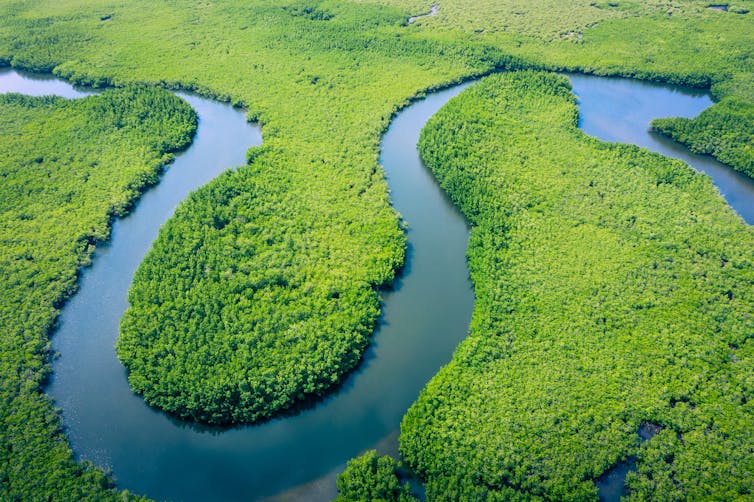
Ending Deforestation And Restoring Forests Is Not Enough
This is the latest in a series of similar declarations. A pledge made at COP24 in Katowice, the New York Declaration on Forests, and Sustainable Development Goal 15 (Life on Land) all include similar commitments to end deforestation by 2030 or earlier.
This week’s COP26 declaration ends with the importance of
pursuing efforts to limit it to 1.5℃, noting that the science shows further acceleration of efforts is needed if we are to collectively keep 1.5℃ within reach.
The fact is, we won’t achieve this through ending deforestation and restoring forests. These efforts are critically needed to address biodiversity loss and rural sustainability, but for limiting warming to 1.5℃, fossil fuel emissions need to come down to zero – now.![]()
Kate Dooley, Research Fellow, Climate & Energy College, The University of Melbourne
This article is republished from The Conversation under a Creative Commons license. Read the original article.
Forests can’t handle all the net-zero emissions plans – companies and countries expect nature to offset too much carbon
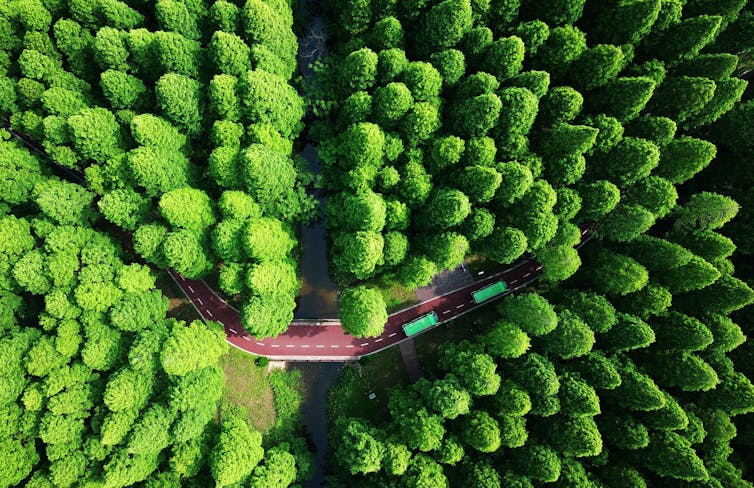
Net-zero emissions pledges to protect the climate are coming fast and furious from companies, cities and countries. But declaring a net-zero target doesn’t mean they plan to stop their greenhouse gas emissions entirely – far from it. Most of these pledges rely heavily on planting trees or protecting forests or farmland to absorb some of their emissions.
That raises two questions: Can nature handle the expectations? And, more importantly, should it even be expected to?
We have been involved in international climate negotiations and land and forest climate research for years. Research and pledges from companies so far suggest that the answer to these questions is no.
What Is Net-Zero?
Net-zero is the point at which all the carbon dioxide still emitted by human activities, such as running fossil fuel power plants or driving gas-powered vehicles, is balanced by the removal of carbon dioxide from the atmosphere. Since the world does not yet have technologies capable of removing carbon dioxide from air at any climate-relevant scale, that means relying on nature for carbon dioxide removal.
According to the Intergovernmental Panel on Climate Change, global carbon dioxide emissions will need to reach net-zero by at least midcentury for the world to have even a small chance of limiting warming to 1.5 degrees Celsius (2.7 F), an aim of the Paris climate agreement to avoid the worst impacts of climate change.
The devil of net-zero, of course, lies in its apparent simplicity.
Nature’s Potential And Its Limits
Climate change is driven largely by cumulative emissions – carbon dioxide that accumulates in the atmosphere and stays there for hundreds to thousands of years, trapping heat near Earth’s surface.
Nature has received a great deal of attention for its ability to remove carbon dioxide from the atmosphere and store it in the biosphere, such as in soils, grasslands, trees and mangroves, via photosynthesis. It is also a source of carbon dioxide emissions through deforestation, land and ecosystem degradation and agricultural practices. However, the right kinds of changes to land management practices can reduce emissions and improve carbon storage.
Net-zero proposals count on finding ways for these systems to take up more carbon than they already absorb.
Researchers estimate that nature might annually be able to remove 5 gigatons of carbon dioxide from the air and avoid another 5 gigatons through stopping emissions from deforestation, agriculture and other sources.
This 10-gigaton figure has regularly been cited as “one-third of the global effort needed to stop climate change,” but that’s misleading. Avoided emissions and removals are not additive.
A new forests and land-use declaration announced at the UN climate conference in November also highlights the ongoing challenges in bringing deforestation emissions to zero, including illegal logging and protecting the rights of Indigenous peoples.
Stored Carbon Doesn’t Stay There Forever
Reaching the point at which nature can remove 5 gigatons of carbon dioxide each year would take time. And there’s another problem: High levels of removal might last for only a decade or so.
When growing trees and restoring ecosystems, the storage potential develops to a peak over decades. While this continues, it reduces over time as ecosystems become saturated, meaning large-scale carbon dioxide removal by natural ecosystems is a one-off opportunity to restore lost carbon stocks.
Carbon stored in the terrestrial biosphere – in forests and other ecosystems – doesn’t stay there forever, either. Trees and plants die, sometimes as a result of climate-related wildfires, droughts and warming, and fields are tilled and release carbon.
When taking these factors into consideration – the delay while nature-based removals scale up, saturation and the one-off and reversible nature of enhanced terrestrial carbon storage – another team of researchers found that restoration of forest and agricultural ecosystems could be expected to remove only about 3.7 gigatons of carbon dioxide annually.
Over the century, ecosystem restoration might reduce global average temperature by approximately 0.12 C (0.2 F). But the scale of removals the world can expect from ecosystem restoration will not happen in time to reduce the warming that is expected within the next two decades.
Nature In Net-Zero Pledges
Unfortunately there is not a great deal of useful information contained in net-zero pledges about the relative contributions of planned emissions reductions versus dependence on removals. There are, however, some indications of the magnitude of removals that major actors expect to have available for their use.
ActionAid reviewed the oil major Shell’s net-zero strategy and found that it includes offsetting 120 million tons of carbon dioxide per year through planting forests, estimated to require around 29.5 million acres (12 million hectares) of land. That’s roughly 45,000 square miles.
Oxfam reviewed the net-zero pledges for Shell and three other oil and gas producers – BP, TotalEnergies and ENI – and concluded that “their plans alone could require an area of land twice the size of the U.K. If the oil and gas sector as a whole adopted similar net zero targets, it could end up requiring land that is nearly half the size of the United States, or one-third of the world’s farmland.”
These numbers provide insight into how these companies, and perhaps many others, view net-zero.
Research indicates that net-zero strategies that rely on temporary removals to balance permanent emissions will fail. The temporary storage of nature-based removals, limited land availability and the time they take to scale up mean that, while they are a critical part of stabilizing the earth system, they cannot compensate for continued fossil fuel emissions.
This means that getting to net-zero will require rapid and dramatic reductions in emissions. Nature will be called upon to balance out what is left, mostly emissions from agriculture and land, but nature cannot balance out ongoing fossil emissions.
To actually reach net-zero will require reducing emissions close to zero.

This story is part of The Conversation’s coverage of COP26, the Glasgow climate conference, by experts from around the world.
Amid a rising tide of climate news and stories, The Conversation is here to clear the air and make sure you get information you can trust. Read more of our U.S. and global coverage.![]()
Doreen Stabinsky, Professor of Global Environmental Politics, College of the Atlantic and Kate Dooley, Research Fellow, Climate & Energy College, The University of Melbourne
This article is republished from The Conversation under a Creative Commons license. Read the original article.
Can selective breeding of ‘super kelp’ save our cold water reefs from hotter seas?
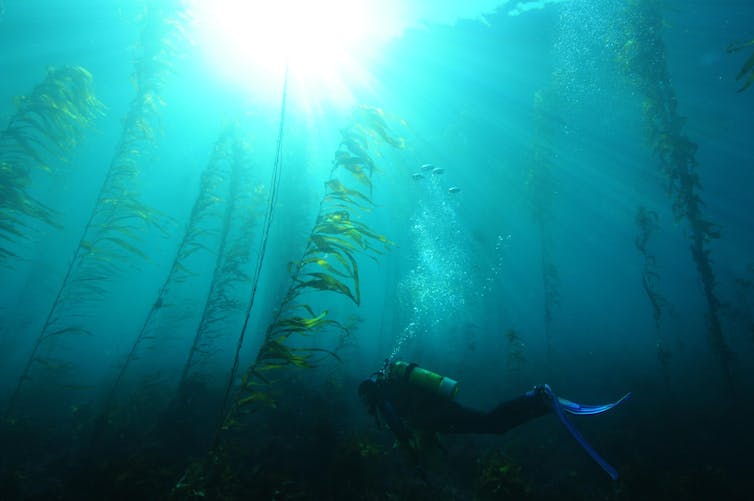
Australia’s vital kelp forests are disappearing in many areas as our waters warm and our climate changes.
While we wait for rapid action to slash carbon emissions – including the United Nations climate talks now underway in Glasgow – we urgently need to buy time for these vital ecosystems.
How? By ‘future-proofing’ our kelp forests to be more resilient and adaptable to changing ocean conditions. Our recent trials have shown selectively bred kelp with higher heat tolerance can be successfully replanted and used in restoration.
This matters because these large seaweed species are the foundation of Australia’s Great Southern Reef, a vast but little-known temperate reef system and a global hotspot of biodiversity.
The reef’s kelp forests run along 8000 km of Australia’s southern coastline, from Geraldton in Western Australia to the Queensland border with New South Wales. These underwater forests support coastal food-webs and fisheries. Think of the famous mass-spawning of Australian Giant Cuttlefish off Whyalla, the rock lobster and abalone fisheries, or our iconic weedy and leafy seadragons.
Unfortunately, these seas are hotspots in the literal sense, with the nation’s southeast and southwest waters warming several times faster than the global average and suffering from some of the worst marine heatwaves recorded.
These increasing temperatures and other climate change impacts are devastating our kelp, including shrinking forests and permanent losses of golden kelp (Ecklonia radiata) on the east and west coasts, and staggering declines of the now-endangered giant kelp (Macrocystis pyrifera) forests in Tasmania.
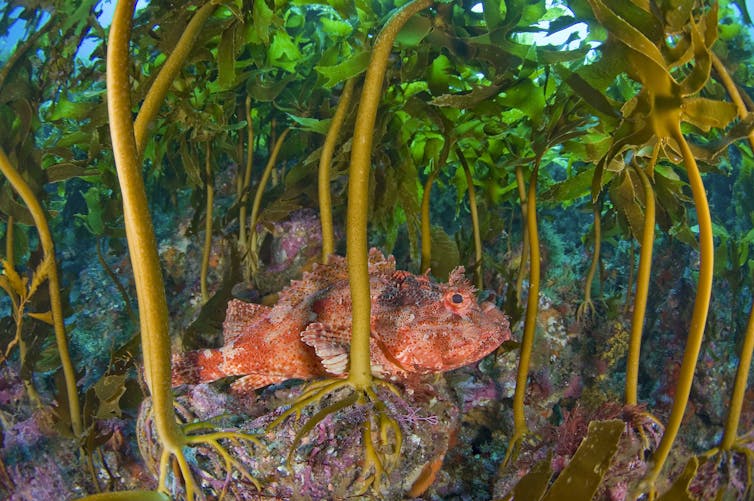
Read more: Australia's 'other' reef is worth more than $10 billion a year - but have you heard of it?
We Need Novel Measures To Buy Time For Climate Action
Australian researchers are leading the way to try to find ways of future-proofing our critical ocean ecosystems, such as kelp forests and coral reefs. In part, that’s because climate change is hitting our ecosystems early and hard.
Climate change is moving much faster than kelp species can adapt. In turn, that threatens all the species that rely on these forests, including us.
If climate change wasn’t happening, we could try to halt or reverse the losses of kelp forests by using traditional restoration methods. But in a world getting hotter and hotter, that is futile in many cases. Even if we slash carbon emissions soon, decades more warming are already locked in.
If we want to keep these forests of the sea alive, we must now consider cutting-edge methods to help kelp survive current and future ocean conditions while governments pursue the urgent goal of reducing emissions.
How To Future Proof An Underwater Forest
Together and separately, we’ve been exploring techniques to speed up the natural rate of evolution to boost kelp resilience. Along with other researchers, we’ve put several techniques to the test in the real world, with promising results. Others remain hypothetical.
At present, there are several broad approaches to future-proofing restoration work. These include:
Genetic rescue focuses on enhancing the genetic diversity of genetically compromised populations to boost their potential to adapt to future conditions. This involves planting and restoring a mix of kelp from disconnected populations of the same species. Improved genetic diversity can boost the ability of these forests to respond to change. We expect this approach to be especially useful in areas where climate change poses a limited threat at present.
Assisted gene flow strategies introduce naturally adapted or tolerant kelp individuals into threatened populations to increase their ability to survive specific threats, like hotter seas. This could help kelp forests in areas affected by climate change now or in the near future. In these situations, the genetic rescue technique could be counterproductive if the new genetic diversity introduced isn’t able to cope with the heat.
Selective breeding is a well-known agricultural technique, and can be used to identify the best kelp to use in these cases. In short, we try to identify kelp with naturally higher tolerance, and then use these as the basis for restoration efforts. These can be transplanted into ailing kelp forests. Trials are presently underway in Tasmania using giant kelp. Early results are exciting, with the largest ‘super kelp’ growing over 12 metres high a year after being planted.
In the future, we may have to explore more cutting-edge strategies to deal with the changing conditions. These include:
Genetic manipulation. This technique extends what is possible with selective breeding by directly manipulating genes to enhance the traits or characteristics that might further boost kelp’s ability to thrive in hotter waters.
Assisted expansion is when species with little chance of survival are relocated to better but novel locations, assuming these exist. This technique could also see new species of kelp being planted to replace existing species, guided by the need to protect the forest ecosystem as a whole, rather than save specific species.
Read more: Underwater health check shows kelp forests are declining around the world
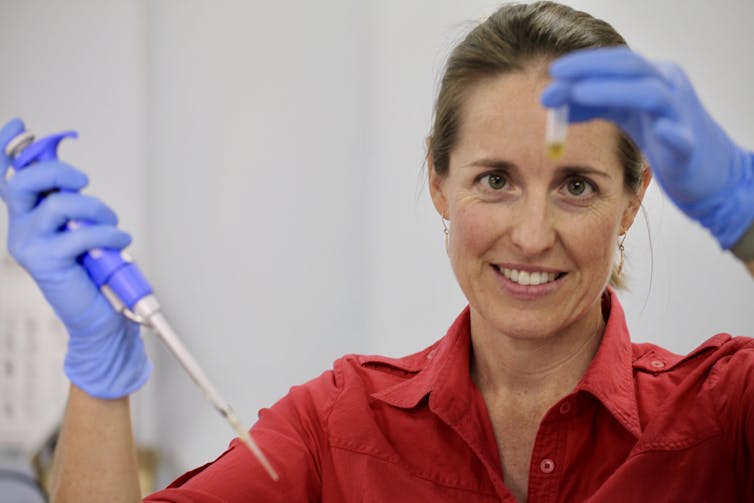
Are These Approaches Ethical?
Each of these techniques – tested or untested – pose challenging ethical questions. That’s because we are not undertaking traditional conservation, where we work to restore a historic kelp ecosystem. Instead, we are modifying these ecosystems in the hope they can better cope with conditions at the extremes of their current survival limits.
That means we must move carefully, weighing potential downsides like genetic pollution and maladaptation (accidental poor adaptation to other stressors) against the probability of further kelp forest destruction from doing nothing.
Such future-proofing interventions could be well suited to areas already hit hard by severe kelp forest losses, those that will be threatened in the near future, or where kelp losses would be particularly damaging environmentally, socially, or economically.
What is certain is that communities that live and rely on our southern coasts must now talk about what they value from kelp forests, and how they want them to look and function into the future.
Our view is that traditional approaches focused on recreating previous ecosystems are likely to be increasingly challenging, given the rate and scale of ongoing disruption in our oceans.
It is crucial that we do not restore nostalgically for ocean conditions which are quickly changing, but instead, work to ensure the long-term survival of these spectacular underwater forests while we wait for rapid action to reduce carbon emissions.![]()
Cayne Layton, Postdoctoral fellow and lecturer, University of Tasmania and Melinda Coleman, Associate professor, The University of Western Australia
This article is republished from The Conversation under a Creative Commons license. Read the original article.
Global emissions almost back to pre-pandemic levels after unprecedented drop in 2020, new analysis shows
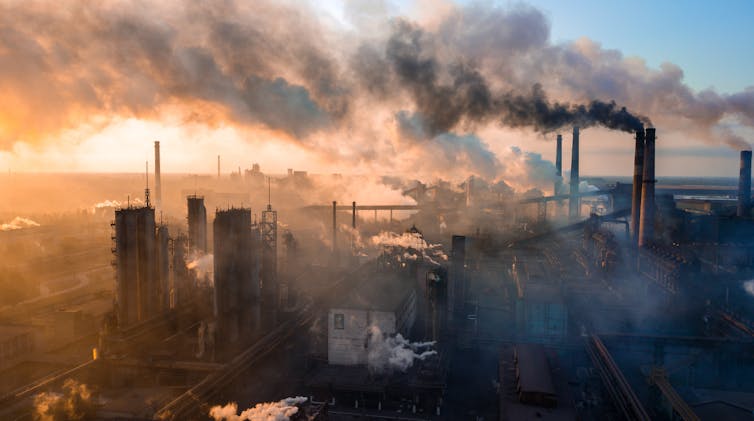
Global carbon dioxide emissions have bounced back after COVID-19 restrictions and are likely to reach close to pre-pandemic levels this year, our analysis released today has found.
The troubling finding comes as the COP26 climate talks continue in Glasgow in a last-ditch bid to keep dangerous global warming at bay. The analysis was undertaken by the Global Carbon Project, a consortium of scientists from around the world who produce, collect and analyse global greenhouse gas information.
The fast recovery in CO₂ emissions, following last year’s sharp drop, should come as no surprise. The world’s strong economic rebound has created a surge in demand for energy, and the global energy system is still heavily dependent on fossil fuels.
Most concerning is the long-term upward trends of CO₂ emissions from oil and gas, and this year’s growth in coal emissions, which together are far from trending towards net-zero by 2050.
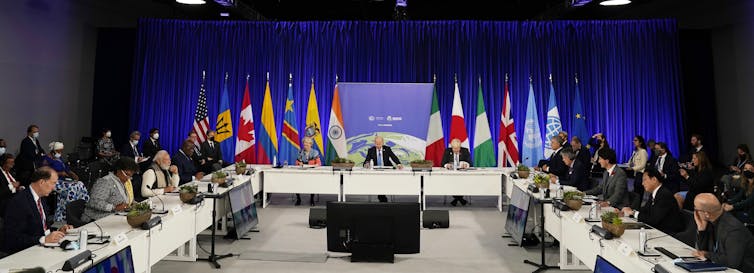
The Global Emissions Picture
Global CO₂ emissions from fossil fuels dropped by 5.4% in 2020, compared to the previous year. But they are set to increase by about 4.9% above 2020 levels this year, reaching 36.4 billion tonnes. This brings them almost back to 2019 levels.
We can expect another 2.9 billion tonnes of CO₂ emissions this year from the net effect of everything we do to the land, including deforestation, degradation and re-vegetation.
This brings us to a total of 39.4 billion tonnes of CO₂ to be emitted by the end of this year.
The fast growth in emissions matches the corresponding large increase in energy demand as the global economy opens up, with the help of US$17.2 trillion in economic stimulus packages around the world.
CO₂ emissions from all fossil fuel types (coal, oil and natural gas) grew this year, with emissions from coal and natural gas set to grow more in 2021 than they fell in 2020.
Emissions from global coal use were declining before the pandemic hit in early 2020 but they surged back this year. Emissions from global gas use have returned to the rising trend seen before the pandemic.
CO₂ emissions from global oil use remain well below pre-pandemic levels but are expected to increase in coming years as road transport and aviation recover from COVID-related restrictions.
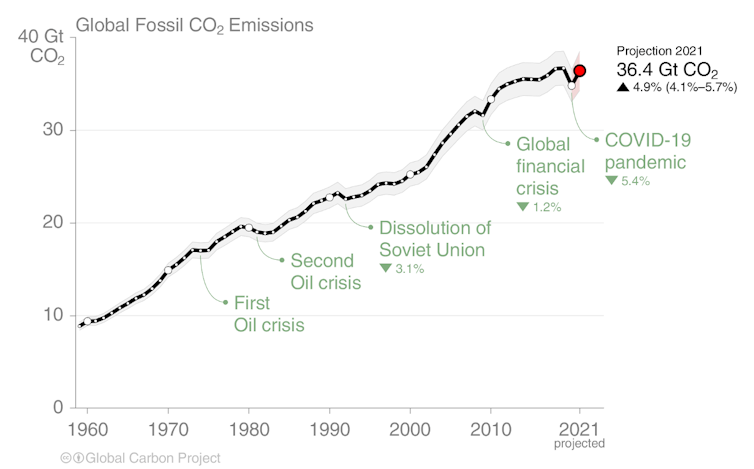
Nations Leading The Emissions Charge
Emissions from China have recovered faster than other countries. It’s among the few countries where emissions grew in 2020 (by 1.4%) followed by a projected growth of 4% this year.
Taking these two years together, CO₂ emissions from China in 2021 are projected to be 5.5% above 2019 levels, reaching 11.1 billion tonnes. China accounted for 31% of global emissions in 2020.
Coal emissions in China are estimated to grow by 2.4% this year. If realised, it would match what was thought to be China’s peak coal emissions in 2013.
India’s CO₂ emissions are projected to grow even faster than China’s this year at 12.6%, after a 7.3% fall last year. Emissions this year are set to be 4.4% above 2019 levels – reaching 2.7 billion tonnes. India accounted for 7% of global emissions in 2020.
Emissions from both the US and European Union are projected to rise 7.6% this year. It would lead to emissions that are, respectively, 3.7% and 4.2% below 2019 levels.
US and EU, respectively, accounted for 14% and 7% of global emissions in 2020.
Emissions in the rest of the world (including all international transport, particularly aviation) are projected to rise 2.9% this year, but remain 4.2% below 2019 levels. Together, these countries represent 59% of global emissions.
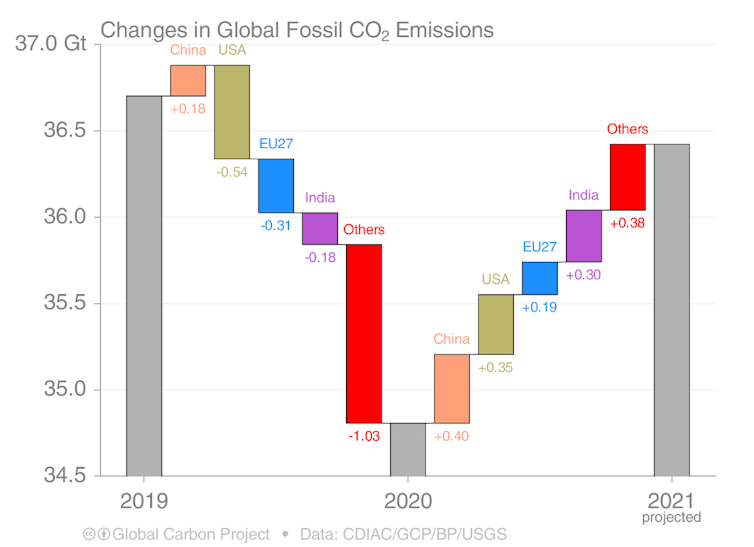
The Remaining Carbon Budget
The relatively large changes in annual emissions over the past two years have had no discernible effect in the speed at which CO₂ accumulates in the atmosphere.
CO₂ concentrations, and associated global warming, are driven by the accumulation of greenhouse gases – particularly CO₂ – since the beginning of the industrial era. This accumulation has accelerated in recent decades.
To stop further global warming, global CO₂ emissions must stop or reach net-zero – the latter meaning that any remaining CO₂ emissions would have to be compensated for by removing an equivalent amount from the atmosphere.
Carbon budgets are a useful way of measuring how much CO₂ can be emitted for a given level of global warming. In our latest analysis, we updated the carbon budget outlined by the Intergovernmental Panel on Climate Change (IPCC) in August this year.
From the beginning of 2022, the world can emit an additional 420 billion tonnes of CO₂ to limit global warming to 1.5℃, or 11 years of emissions at this year’s rate.
To limit global warming to 2℃, the world can emit an additional 1,270 billion tonnes of CO₂ – or 32 years of emissions at the current rate.
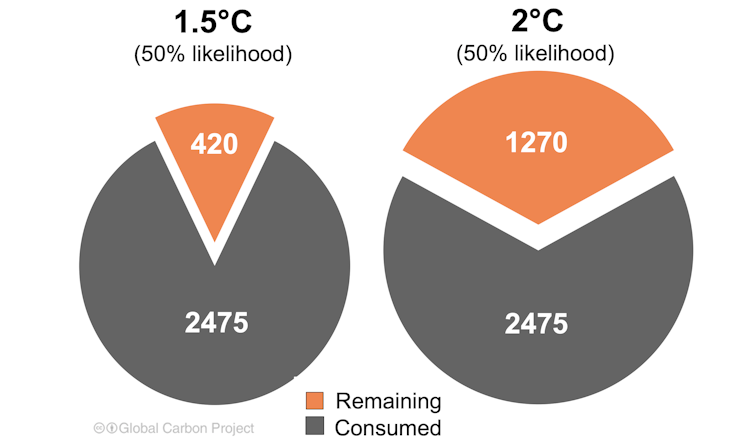
These budgets are the compass to net-zero emissions. Consistent with the pledge by many countries to reach net-zero emissions by 2050, CO₂ emissions need to decline by 1.4 billion tonnes each year, on average.
This is an amount comparable to the drop during 2020, of 1.9 billion tonnes. This fact highlights the extraordinary challenge ahead and the need to increase short- and long-term commitments to drive down global emissions.

This story is part of The Conversation’s coverage on COP26, the Glasgow climate conference, by experts from around the world.
Amid a rising tide of climate news and stories, The Conversation is here to clear the air and make sure you get information you can trust. More. ![]()
Pep Canadell, Chief research scientist, Climate Science Centre, CSIRO Oceans and Atmosphere; and Executive Director, Global Carbon Project, CSIRO; Corinne Le Quéré, Royal Society Research Professor of Climate Change Science, University of East Anglia; Glen Peters, Research Director, Center for International Climate and Environment Research - Oslo; Pierre Friedlingstein, Chair, Mathematical Modelling of Climate, University of Exeter; Robbie Andrew, Senior Researcher, Center for International Climate and Environment Research - Oslo, and Rob Jackson, Professor, Department of Earth System Science, and Chair of the Global Carbon Project, Stanford University
This article is republished from The Conversation under a Creative Commons license. Read the original article.
Australia is about to be hit by a carbon tax whether the prime minister likes it or not, except the proceeds will go overseas
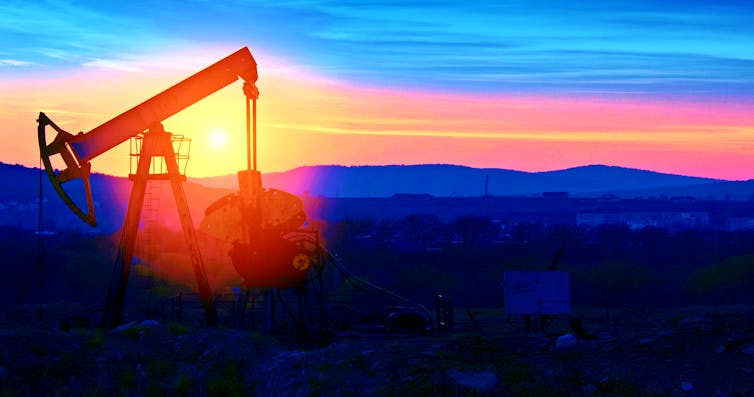
Ten years ago, in the lead-up to Australia’s short-lived carbon price or “carbon tax” (either description is valid), the deepest fear on the part of businesses was that they would lose out to untaxed firms overseas.
Instead of buying Australian carbon-taxed products, Australian and export customers would buy untaxed (possibly dirtier) products from somewhere else.
It would give late-movers (countries that hadn’t yet adopted a carbon tax) a “free kick” in industries from coal and steel to aluminium to liquefied natural gas to cement, to wine, to meat and dairy products, even to copy paper.
It’s why the Gillard government handed out free permits to so-called trade-exposed industries, so they wouldn’t face unfair competition.
As a band-aid, it sort of worked. The firms with the most to lose were bought off.
But it was hardly a solution. What if every country had done it? Then, wherever there was a carbon tax (and wherever there wasn’t), trade-exposed industries would be exempt. The tax wouldn’t do enough to bring down emissions.
We Are About To Face Carbon Tariffs
The European Union has cottoned on to the imperfect workarounds introduced by countries such as Australia, and is about to tackle things from the other direction.
Instead of treating foreign and local producers the same by letting them both off the hook, it’s going to place both on the hook.
It’s about to make sure producers in higher-emitting countries such as China (and Australia) can’t undercut producers who pay carbon prices.
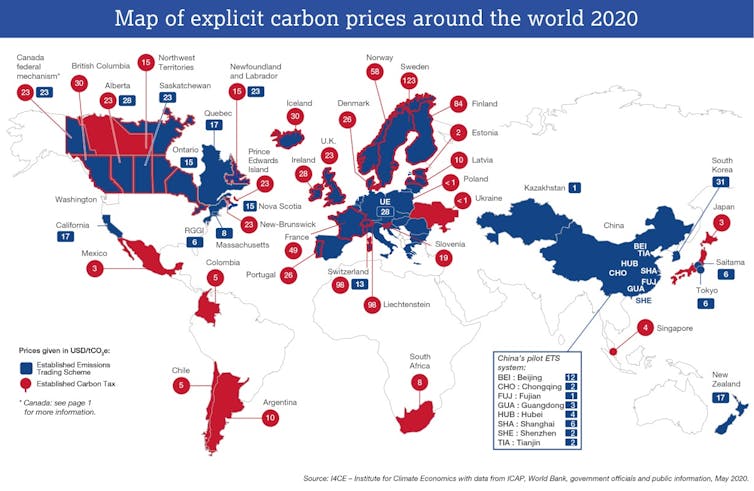
Unless foreign producers pay a carbon price like the one in Europe, the EU will impose a carbon price on their goods as they come in — a so-called Carbon Border Adjustment Mechanism, or “carbon tariff”.
Australia’s Energy Minister Angus Taylor says he is “dead against” carbon tariffs, a stance that isn’t likely to carry much weight in France or any of the other 26 EU nations.
Australia Is Familiar With The Arguments For Them
From 2026, Europe will apply the tariff to direct emissions from imported iron, steel, cement, fertiliser, aluminium and electricity, with other products (and possibly indirect emissions) to be added later.
That is, unless they come from a country with a carbon price.
Canada is also exploring the idea, as part of “levelling the playing field”. So is US President Joe Biden, who wants to stop polluting countries “undermining our workers and manufacturers”.
Their arguments line up with those heard in Australia in the lead-up to our carbon price: that unless there’s some sort of adjustment, a local carbon tax will push local employers towards “pollution havens” where emissions are untaxed.
Read more: The EU is considering carbon tariffs on Australian exports. Is that legal?
In practice, there’s little Australia can do to stop Europe and others imposing carbon tariffs.
As Australia discovered when China blocked its exports of wine and barley, there’s little a free trade agreement, or even the World Trade Organisation, can do. The WTO was neutered when former US President Donald Trump blocked every appointment to its appellate body, leaving it unstaffed, a stance Biden hasn’t reversed.
Even so, the EU believes such action would be allowed under trade rules, pointing to a precedent established by Australia, among other countries.
Legality Isn’t The Point
When Australia introduced the Goods and Services Tax in 2000, it passed laws allowing it to tax imports in the same way as locally produced products, a move it has recently extended to small parcels and services purchased online.
Trade expert and Nobel Prizewinning economist Paul Krugman says he is prepared to argue the toss with politicians such as Australia’s trade minister about what’s legal and whether carbon tariffs would be “protectionist”.
But he says that’s beside the point:
Yes, protectionism has costs, but these costs are often exaggerated, and they’re trivial compared with the risks of runaway climate change. I mean, the Pacific Northwest — the Pacific Northwest! — has been baking under triple-digit temperatures, and we’re going to worry about the interpretation of Article III of the General Agreement on Tariffs and Trade?
And some form of international sanctions against countries that don’t take steps to limit emissions is essential if we’re going to do anything about an existential environmental threat.
Victoria University calculations suggest Europe’s carbon tariffs will push up the price of imported Australian iron, steel and grains by about 9%, and drive up the price of every other Australian import by less, apart from coal whose imported price would soar by 53%.
The tariffs would be collected by Europe rather than Australia. They could be escaped if Australian makers of iron, steel and other products can find ways to cut emissions.
Increase in price of exports to EU under carbon border adjustment mechanism
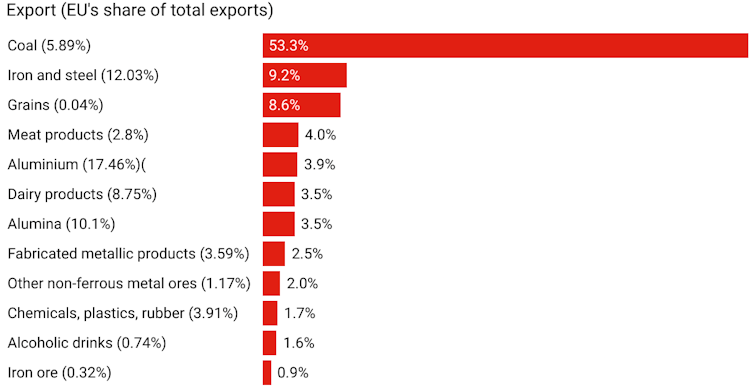
The tariffs could also be avoided if Australia were to introduce a carbon price or something similar, and collected the money itself.
This makes a compelling case for another look at an Australian carbon price. If Australian emissions are on the way down anyway, as Prime Minister Scott Morrison contends, it needn’t be set particularly high. If he is wrong, it would need to be set higher.
Read more: No point protesting, Australia faces carbon levies unless it changes course
One thing the sad story of Australia’s on-again, off-again, now on-again (through carbon tariffs) history of carbon pricing has shown is that politicians aren’t the best people to set the rates.
In 2011, Prime Minister Julia Gillard set up an independent, Reserve Bank-like Climate Change Authority to advise on the carbon price and emissions targets, initially chaired by a former governor of the Reserve Bank.
Astoundingly, despite attempts to abolish it, it still exists. It might yet have work to do.![]()
Peter Martin, Visiting Fellow, Crawford School of Public Policy, Australian National University
This article is republished from The Conversation under a Creative Commons license. Read the original article.
Closing the loophole: a minimum wage for Australia’s farm workers is long overdue

The Fair Work Commission’s ruling that Australian farm workers paid piece rates to pick fruit and vegetables must now get a base wage of $25.41 an hour is long overdue and absolutely necessary.
In theory, anyone working in Australia should be paid a minimum wage. But piecework payments, by which workers are paid solely on what they produce with no guarantee of a minimum rate, have lingered on as a common practice in the agricultural sector.
As the commission’s ruling notes: “A substantial proportion of the seasonal harvesting workforce are engaged on piece rates and more than half of the seasonal harvesting workforce are temporary migrant workers. These characteristics render the seasonal harvesting workforce vulnerable to exploitation.”
Piecework arrangements needn’t be exploitative. It depends on the rates – whether they’re enough to make a living in a bad season, when fruit is scarce. By law, they should be. In practice they haven’t been. The Fair Work Commission has acknowledged and sought to address this. It’s about time.
Underpayment Is An Open Secret
The Horticulture Award, which covers farm fruit and vegetable pickers, does set minimum weekly and hourly rates. But it also permits full-time, part-time or casual employees to make a piece-rate agreement with their employee.
Such agreements must be entered into “without coercion or duress”, and the agreed rate is meant to “enable the average competent employee to earn at least 15% more per hour than the minimum hourly rate” set in the award.
This has not been the reality for many.
Read more: We've let wage exploitation become the default experience of migrant workers
In 2017 the National Temporary Migrant Work Survey found wage theft common for migrant workers. Of 4,322 participants in the survey, 46% earned no more than $15 an hour, while 30% earned $12 a hour or less. Wage theft was prevalent across a range of industries, but the worst paid jobs were in farm work. Of the migrants working as fruit and vegetable pickers, 31% earned $10 per hour or less, while 15% earned $5 an hour or less.
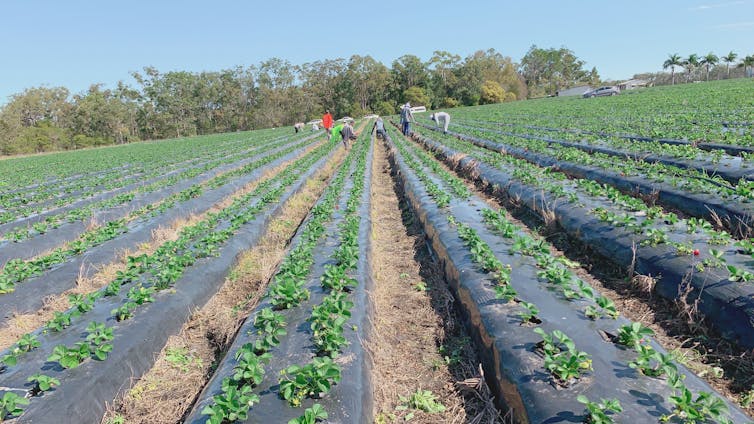
A 2019 study by Unions NSW and the Migrant Worker Centre in Victoria found similarly grim results. Of 1,300 migrant workers surveyed, 78% reported being underpaid at some point, and 34% on piece rates had never signed an agreement. The lowest piece rates reported were from grape and zucchini farms, where respondents reported earning as little as $9 a day.
Just ask any backpacker working in the sector if they know anyone who has been ripped off. It’s not exactly a secret. I’ve picked fruit myself and experienced it firsthand.
A Particularly Vulnerable Workforce
It is worth noting that not all migrant farm workers have been equally vulnerable.
The Seasonal Worker Program, for workers from nine Pacific nations and Timor Leste, has been more tightly regulated, and generally successful in avoiding the sort of exploitation described above. In 2019 this program offered about 12,000 visas. Stephen Howes of the Development Policy Centre has argued the program could be expanded to more than 100,000 places.
Read more: Why closing our borders to foreign workers could see fruit and vegetable prices spike
Far more vulnerable to exploitation have been those on the more laissez-faire Working Holiday Maker Scheme – better known as the backpackers’ visa. This visa requires 88 days of farm work to stay in Australia for a year, and a further 180 days to stay for a second year. The evidence is that many accept being underpaid for those periods as a cost of staying in Australia.
Newly arrived Australian residents, particularly refugees, are also at risk, due to unfamiliarity with working rights and entitlements.
Read more: Why Australian unions should welcome the new Agricultural Visa
Closing A Loophole
If piece rates are set at a fair level, and the agreement is truly voluntary, such payment can be win-win – good for the farmer and an opportunity for a motivated worker to earn better money than just working for a flat minimum rate.
A lot of my career has involved working abroad in places where the poor and unconnected have no hope of getting ahead. Researching on Australian agriculture I’ve often been touched by the stories I’ve heard of experienced pickers, who plan to keep picking to save enough money to buy land of their own. They tend to be fierce and hard-working. You don’t want to get between them and the good fruit.
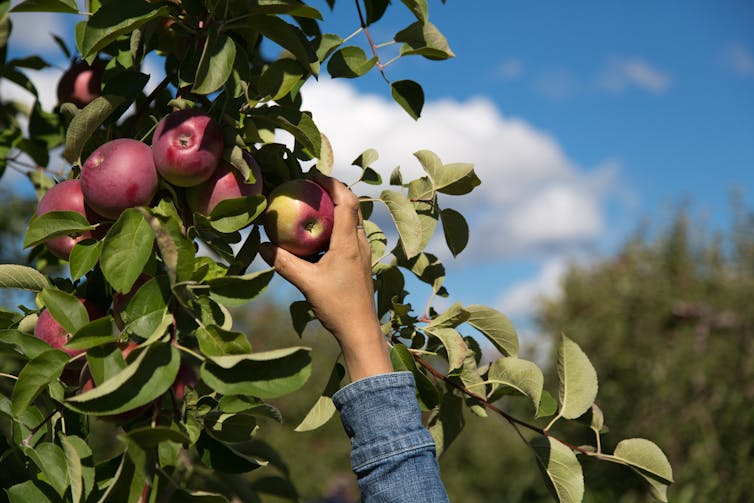
But not everyone is an experienced picker able to look out for their own interests. That is why a base rate is essential.
The problem with the piecemeal rate provisions in the the Horticulture Award was that clause 15.2(i) stated:
Nothing in this award guarantees an employee on a piecework rate will earn at least the minimum ordinary time weekly rate or hourly rate in this award for the type of employment and the classification level of the employee, as the employee’s earnings are contingent on their productivity.
The Australian Workers Union applied in December 2020 to have this clause struck out and replaced with a provision setting a minimum hourly rate for piecework. This application was supported by the United Workers’ Union, the Australian Council of Social Service, and the state governments of Queensland, Victoria and Western Australia.
Read more: How migrant workers are critical to the future of Australia's agricultural industry
The application was opposed by the Australian Fresh Produce Alliance, the Australian Industry Group and the National Farmer’s Federation.
In its decision on October 3, the Fair Work Commission said while some pieceworkers earn significantly more than the target rate for the “average competent employee”, the totality of the evidence “presents a picture of significant underpayment of pieceworkers”.
The best way to look at this is the Fair Work Commission closing a loophole.
It was already the responsibility of employers to pay piece rates high enough to allow competent workers make 15% more the minimum wage. Rather than thinking of this ruling as imposing an “extra cost” on farmers, it should been seen as putting in place a mechanism to ensure compliance with law.
A base rate takes the prospect of vulnerable workers getting paid $3 an hour off the table. That’s not asking for a lot.![]()
Michael Rose, Research fellow, Australian National University
This article is republished from The Conversation under a Creative Commons license. Read the original article.
Bushcare In Pittwater
Where we work Which day What time
Avalon
Angophora Reserve 3rd Sunday 8:30 - 11:30am
Avalon Dunes 1st Sunday 8:30 - 11:30am
Avalon Golf Course 2nd Wednesday 3 - 5:30pm
Careel Creek 4th Saturday 8:30 - 11:30am
Toongari Reserve 3rd Saturday 9 - 12noon (8 - 11am in summer)
Bangalley Headland 2nd Sunday 9 to 12noon
Bayview
Winnererremy Bay 4th Sunday 9 to 12noon
Bilgola
North Bilgola Beach 3rd Monday 9 - 12noon
Algona Reserve 1st Saturday 9 - 12noon
Plateau Park 1st Friday 8:30 - 11:30am
Church Point
Browns Bay Reserve 1st Tuesday 9 - 12noon
McCarrs Creek Reserve Contact Bushcare Officer To be confirmed
Clareville
Old Wharf Reserve 3rd Saturday 8 - 11am
Elanora
Kundibah Reserve 4th Sunday 8:30 - 11:30am
 Mona Vale
Mona Vale Mona Vale Beach Basin 1st Saturday 8 - 11am
Mona Vale Dunes 2nd Saturday +3rd Thursday 8:30 - 11:30am
Newport
Bungan Beach 4th Sunday 9 - 12noon
Crescent Reserve 3rd Sunday 9 - 12noon
North Newport Beach 4th Saturday 8:30 - 11:30am
Porter Reserve 2nd Saturday 8 - 11am
North Narrabeen
Irrawong Reserve 2nd Saturday 2 - 5pm
Palm Beach
North Palm Beach Dunes 3rd Saturday 9 - 12noon
Scotland Island
Catherine Park 2nd Sunday 10 - 12:30pm
Elizabeth Park 1st Saturday 9 - 12noon
Pathilda Reserve 3rd Saturday 9 - 12noon
Warriewood
Warriewood Wetlands 1st Sunday 8:30 - 11:30am
Whale Beach
Norma Park 1st Friday 9 - 12noon
Western Foreshores
Coopers Point, Elvina Bay 2nd Sunday 10 - 1pm
Rocky Point, Elvina Bay 1st Monday 9 - 12noon
Gardens And Environment Groups And Organisations In Pittwater
Avalon Golf Course Bushcare Needs You
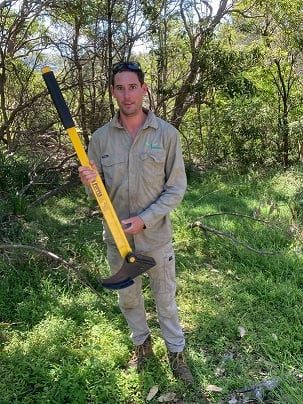
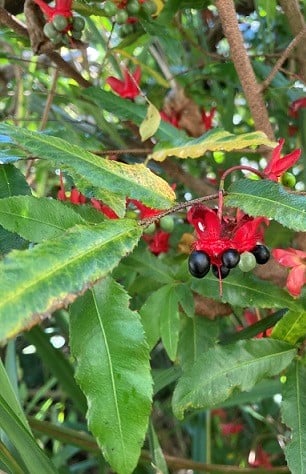
Pittwater Reserves + Others
A History Of The Campaign For Preservation Of The Warriewood Escarpment by David Palmer OAM and Angus Gordon OAM
Angophora Reserve - Angophora Reserve Flowers
Annie Wyatt Reserve - A Pictorial
Avalon's Village Green: Avalon Park Becomes Dunbar Park - Some History + Toongari Reserve and Catalpa Reserve
Bairne Walking Track Ku-Ring-Gai Chase NP by Kevin Murray
Bangalley Headland Bangalley Mid Winter
Banksias of Pittwater
Barrenjoey Headland: Spring flowers Barrenjoey Headland after fire
Bayview Baths
Bayview Wetlands
Beeby Park
Bilgola Beach
Botham's Beach
Bungan Beach Bush Care
Careel Bay Saltmarsh plants
Careel Bay Birds
Careel Bay Clean Up day
Careel Bay Playing Fields History and Current
Careel Creek
Careel Creek - If you rebuild it they will come
Centre trail in Ku-ring-gai Chase National Park
Chiltern Track- Ingleside by Marita Macrae
Clareville Beach
Clareville/Long Beach Reserve + some History
Coastal Stability Series: Cabbage Tree Bay To Barrenjoey To Observation Point by John Illingsworth, Pittwater Pathways, and Dr. Peter Mitchell OAM
Cowan Track by Kevin Murray
Curl Curl To Freshwater Walk: October 2021 by Kevin Murray and Joe Mills
Currawong State Park Currawong Beach + Currawong Creek
Deep Creek To Warriewood Walk photos by Joe Mills
Drone Gives A New View On Coastal Stability; Bungan: Bungan Headland To Newport Beach + Bilgola: North Newport Beach To Avalon + Bangalley: Avalon Headland To Palm Beach
Dunbar Park - Some History + Toongari Reserve and Catalpa Reserve
Dundundra Falls Reserve: August 2020 photos by Selena Griffith - Listed in 1935
Elsie Track, Scotland Island
Elvina Track in Late Winter 2019 by Penny Gleen
Elvina Bay Walking Track: Spring 2020 photos by Joe Mills
Elvina Bay-Lovett Bay Loop Spring 2020 by Kevin Murray and Joe Mills
Fern Creek - Ingleside Escarpment To Warriewood Walk + Some History photos by Joe Mills
Ingleside
Ingleside Wildflowers August 2013
Irrawong - Ingleside Escarpment Trail Walk Spring 2020 photos by Joe Mills
Irrawong - Mullet Creek Restoration
Katandra Bushland Sanctuary - Ingleside
McCarrs Creek
McCarr's Creek to Church Point to Bayview Waterfront Path
McKay Reserve
Mona Vale Beach - A Stroll Along, Spring 2021 by Kevin Murray
Mona Vale Headland, Basin and Beach Restoration
Mount Murray Anderson Walking Track by Kevin Murray and Joe Mills
Mullet Creek
Narrabeen Creek
Narrabeen Lagoon Catchment: Past Notes Present Photos by Margaret Woods
Narrabeen Lagoon State Park
Narrabeen Lagoon State Park Expansion
Narrabeen Rockshelf Aquatic Reserve
Nerang Track, Terrey Hills by Bea Pierce
Newport Bushlink - the Crown of the Hill Linked Reserves
Newport Community Garden - Woolcott Reserve
Newport to Bilgola Bushlink 'From The Crown To The Sea' Paths: Founded In 1956 - A Tip and Quarry Becomes Green Space For People and Wildlife
Pittwater spring: waterbirds return to Wetlands
Pittwater's Lone Rangers - 120 Years of Ku-Ring-Gai Chase and the Men of Flowers Inspired by Eccleston Du Faur
Pittwater's Parallel Estuary - The Cowan 'Creek
Riddle Reserve, Bayview
Salvation Loop Trail, Ku-Ring-Gai Chase National Park- Spring 2020 - by Selena Griffith
Stapleton Reserve
Stapleton Park Reserve In Spring 2020: An Urban Ark Of Plants Found Nowhere Else
The Chiltern Track
The Resolute Beach Loop Track At West Head In Ku-Ring-Gai Chase National Park by Kevin Murray
Towlers Bay Walking Track by Joe Mills
Trafalgar Square, Newport: A 'Commons' Park Dedicated By Private Landholders - The Green Heart Of This Community
Turimetta Beach Reserve by Joe Mills, Bea Pierce and Lesley
Turimetta Beach Reserve: Old & New Images (by Kevin Murray) + Some History
Turimetta Headland
Warriewood Wetlands and Irrawong Reserve
Whale Beach Ocean Reserve: 'The Strand' - Some History On Another Great Protected Pittwater Reserve
Winji Jimmi - Water Maze

New Shorebirds WingThing For Youngsters Available To Download
A Shorebirds WingThing educational brochure for kids (A5) helps children learn about shorebirds, their life and journey. The 2021 revised brochure version was published in February 2021 and is available now. You can download a file copy here.
If you would like a free print copy of this brochure, please send a self-addressed envelope with A$1.10 postage (or larger if you would like it unfolded) affixed to: BirdLife Australia, Shorebird WingThing Request, 2-05Shorebird WingThing/60 Leicester St, Carlton VIC 3053.

 Shorebird Identification Booklet
Shorebird Identification Booklet
The Migratory Shorebird Program has just released the third edition of its hugely popular Shorebird Identification Booklet. The team has thoroughly revised and updated this pocket-sized companion for all shorebird counters and interested birders, with lots of useful information on our most common shorebirds, key identification features, sighting distribution maps and short articles on some of BirdLife’s shorebird activities.
The booklet can be downloaded here in PDF file format: http://www.birdlife.org.au/documents/Shorebird_ID_Booklet_V3.pdf
Paper copies can be ordered as well, see http://www.birdlife.org.au/projects/shorebirds-2020/counter-resources for details.
Download BirdLife Australia's children’s education kit to help them learn more about our wading birdlife
Shorebirds are a group of wading birds that can be found feeding on swamps, tidal mudflats, estuaries, beaches and open country. For many people, shorebirds are just those brown birds feeding a long way out on the mud but they are actually a remarkably diverse collection of birds including stilts, sandpipers, snipe, curlews, godwits, plovers and oystercatchers. Each species is superbly adapted to suit its preferred habitat. The Red-necked Stint is as small as a sparrow, with relatively short legs and bill that it pecks food from the surface of the mud with, whereas the Eastern Curlew is over two feet long with a exceptionally long legs and a massively curved beak that it thrusts deep down into the mud to pull out crabs, worms and other creatures hidden below the surface.
Some shorebirds are fairly drab in plumage, especially when they are visiting Australia in their non-breeding season, but when they migrate to their Arctic nesting grounds, they develop a vibrant flush of bright colours to attract a mate. We have 37 types of shorebirds that annually migrate to Australia on some of the most lengthy and arduous journeys in the animal kingdom, but there are also 18 shorebirds that call Australia home all year round.
What all our shorebirds have in common—be they large or small, seasoned traveller or homebody, brightly coloured or in muted tones—is that each species needs adequate safe areas where they can successfully feed and breed.
The National Shorebird Monitoring Program is managed and supported by BirdLife Australia.
This project is supported by Glenelg Hopkins Catchment Management Authority and Hunter Local Land Services through funding from the Australian Government’s National Landcare Program. Funding from Helen Macpherson Smith Trust and Port Phillip Bay Fund is acknowledged.
The National Shorebird Monitoring Program is made possible with the help of over 1,600 volunteers working in coastal and inland habitats all over Australia.
The National Shorebird Monitoring program (started as the Shorebirds 2020 project initiated to re-invigorate monitoring around Australia) is raising awareness of how incredible shorebirds are, and actively engaging the community to participate in gathering information needed to conserve shorebirds.
In the short term, the destruction of tidal ecosystems will need to be stopped, and our program is designed to strengthen the case for protecting these important habitats.
In the long term, there will be a need to mitigate against the likely effects of climate change on a species that travels across the entire range of latitudes where impacts are likely.
The identification and protection of critical areas for shorebirds will need to continue in order to guard against the potential threats associated with habitats in close proximity to nearly half the human population.
Here in Australia, the place where these birds grow up and spend most of their lives, continued monitoring is necessary to inform the best management practice to maintain shorebird populations.
BirdLife Australia believe that we can help secure a brighter future for these remarkable birds by educating stakeholders, gathering information on how and why shorebird populations are changing, and working to grow the community of people who care about shorebirds.
To find out more visit: http://www.birdlife.org.au/projects/shorebirds-2020/shorebirds-2020-program
Aussie Bread Tags Collection Points

Good Luck To All Those Sitting HSC Exams This Week
Good luck and best wishes to all HSC students sitting their exams.
There are many pathways to goals, of which the HSC is just one, and we wish you the very best of luck as you near the end of your school year and look to the opportunities ahead.
You're sharing your experience with other students who have also had an unusual year, with changes due to coronavirus, and together you've proved adaptable and resilient and we congratulate you on that.
Please remember to eat, sleep, take a swim or do a meditation when you need to - or even as part of going through your program of 'things to be done' over the coming days. Then it will be time to spread your summer wings!
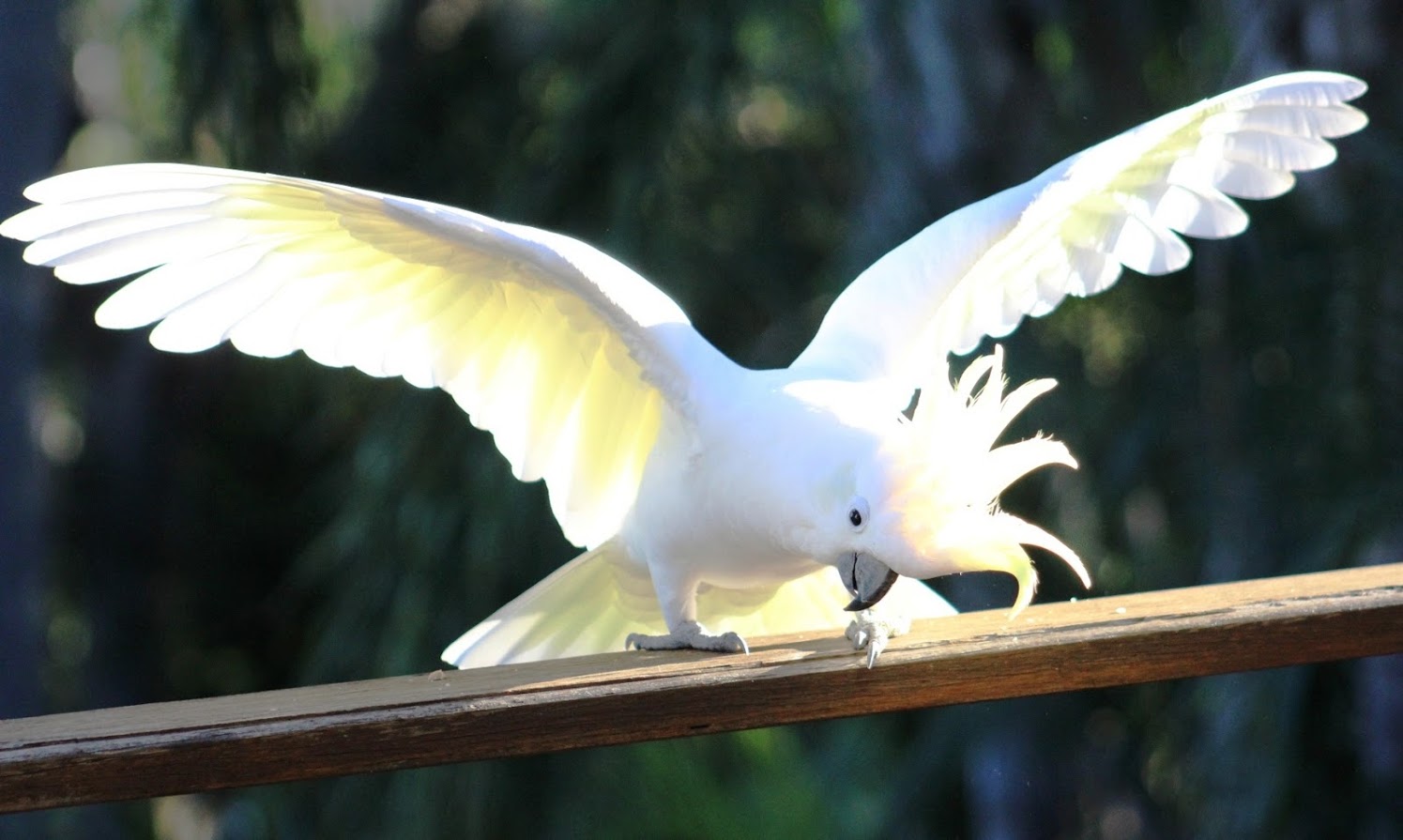
Covid-Safe HSC Exam Rules
HSC written exams will run from 9 November to 3 December with strict COVID-safe exam protocols in place. These protocols will be updated if the Health advice changes.
Students must not attend an exam if they have:
- any cold or flu-like symptoms (fever, cough, sore/scratchy throat, shortness of breath, loss of taste or sense of smell).
- been tested for COVID-19 and have not yet received their test result
- been directed by NSW health to self-isolate
- recently tested positive for COVID-19 and are still required to self-isolate.
Students can apply for illness and misadventure if they can’t attend an exam because they:
- have COVID-19 symptoms
- have an exam cancelled
- are required to self-isolate.
A medical certificate or other evidence will be required.
Comprehensive COVID-safe exam protocols supported by NSW Health have been provided to schools. Principals can access the protocols via Schools Online.
The following advice is an overview of how written exams will be run to protect the health and safety of everyone involved.
Vaccination advice
Students
- HSC students are strongly encouraged to be fully vaccinated in time for their exams.
- Make a booking via the COVID-19 Vaccine Eligibility Checker.
Presiding officers, supervisors and school staff
All school and HSC supervision staff must be fully vaccinated before written exams start on 9 November.
You need to book an appointment to get vaccinated.
Masks
HSC students and exam staff must wear a face mask inside the exam room and while waiting to enter the exam room, unless they have a medical exemption.
By wearing a face mask during the HSC exams, students will reduce their risk of contracting COVID, of transmitting COVID-19 to others, and of being classified as a close contact should there be a COVID positive case in one of exams.
Students can only remove their face mask momentarily if they need to adjust it or drink water.
What happens if a student refuses to wear a mask?
Wearing a face mask is a condition of entry, so refusing to wear one is a breach of exam rules and the student will not be allowed to complete the exam.
This may mean that the student is not eligible for the HSC or an ATAR.
Exemptions
- If a student cannot wear a mask because of a disability, physical or mental health illness or condition, they must provide their principal with and carry to all exams either:
- a medical certificate or letter signed by a registered health practitioner (eg a doctor) or a registered NDIS provider
- OR a statutory declaration.
Arrival protocols
Students must:
- report directly to their designated exam room/screening area
- follow school check-in processes
- stand a minimum of 1.5 metres apart while waiting for screening and before entering the exam room
- use hand sanitiser as they enter the exam room
- not interact in groups before or after exams.
Student screening
Students will be screened using their school sector’s protocols. This will include asking the student:
- if they have any flu-like symptoms (fever, cough, sore/scratchy throat, shortness of breath, loss of taste or sense of smell)
- if they have been tested for COVID-19 and haven’t received their negative test result yet
- if they are required to self-isolate.
Students who provide negative COVID-19 test results can sit the exam, except those who have been asked by NSW Health to self-isolate.
Temperature checking will NOT be used to screen students.
Flu-like symptoms Before an exam
Students or exam staff with flu-like symptoms or who have been advised to isolate by NSW Health must:
- not attend the exam
- contact their school/manager immediately
- get tested.
Parents with questions about their child attending an exam should contact their school or relevant sector authority:
NSW Department of Education
Catholic system authority or Catholic Schools NSW
Independent schools: contact the school directly.
At the exam centre
Students who show flu-like symptoms at the exam centre will be asked to leave immediately.
The student must be isolated and collected from school.
The school delegate must advise the student to get tested for COVID-19 and to seek medical advice. Students need evidence to support any illness/misadventure application they submit.
Hygiene and cleaning
All students and exam staff must practice good personal hygiene at the exam centre, including:
- regularly hand washing or sanitising
- coughing and sneezing into their elbow
- avoiding touching their face.
Exam rooms will be cleaned each day and hygiene supplies, including hand sanitiser and alcohol wipes, will be available in each exam room.
Students should wipe down chairs at the end of their exam and place the wipe in the bins provided as they leave the exam room. A hygiene marshal or supervisor will wipe down desks after exams.
Students and staff must not share stationery or other items.
Physical distancing
Exam rooms
- Exams must be held in well ventilated spaces with a minimum 1.5 metre distance between students.
- HSC exams in a hall should have doors and windows open to allow a high level of ventilation.
- Exam group sizes will be kept small, where possible. Limiting student numbers per room ensures that in the event of a confirmed case, fewer students will be identified as close contacts.
- HSC exam rooms will be isolated from the rest of the school, where possible.
- Supervisors must maintain 1.5 metre distance wherever possible.
Other areas
Students and exam staff should keep a 1.5 metre distance at arrival and departure points and during breaks.
All reasonable steps should be taken to prevent the mingling of student cohorts and staff from different schools. This includes separate exam rooms and screening areas for visiting students.
Students with known illnesses
Students with a clinical history or known illness that may present as a COVID-19-like symptoms need to provide their school with written evidence from their doctor that the symptoms they are displaying are of a known medical condition.
A negative COVID-19 test is recommended as a precaution. Any change in symptoms may warrant repeat COVID-19 testing, especially if new COVID-19-like symptoms develop.
Border closures
Students who are unable to attend an exam due to international or state border closures should contact overseas@nesa.nsw.edu.au or call (02) 9367 8183.
School closures and alternative venues
The principal is responsible for developing and implementing contingency plans to minimise disruption to exams due to a COVID-related school closure. This may include identifying an alternative venue.
Alternative venues will be close to the school or on school grounds and must meet COVID-safe protocols.
Long Reef: Special By Any Measure
Published November 4, 2021 by Pittwater Pathways, John Illingsworth
Long Reef – Special by any measure.
The title says it all.
The Long Reef headland and shore platform is one of the most visited and most interesting on the Sydney coast. It has been an Aquatic Reserve for 41 years and explored by thousands of people viewing the wonderful biology and marine ecology described by Prof Dakin, Isobel Bennett, and Elizabeth Pope in numerous editions of their Australian Seashores.
Not only does it have a wealth of inter-tidal life forms but the geology of the headland has intrigued observers since the earliest days of settlement. Prior to that Aboriginal people used the area as a supermarket and have left their trace. No doubt they had stories about this major promontory but regrettably these have been lost in time.
In this 35 minute video we travel right around the headland from Dee Why Lagoon to Fishermans Beach with Dr Peter Mitchell who relates the geologic story and in passing, challenges a number of conventional interpretations about the strata we see. Naturalist Phil Colman has haunted the reef for decades and contributes insights into the dynamics of life in the inter-tidal zone.
Our stories are not complete. Quite likely a number of our points are wrong. But that is one of the attractions of a place like this where all previous tales can be challenged and anyone, including you, can make new observations that will test traditional knowledge.
We hope you enjoy the journey, and look forward to the next generation telling a better tale.
Decorative Paint Work. Artisans Of Australia.
Free Training To Support Push For The Bush This Summer
November 5, 2021
Young people are being encouraged to skill up this summer and support the regions with 10,000 free training places across more than 800 courses now available to study.
The NSW Government today launched its Summer Skills program, offering free training in critical industries delivered by TAFE NSW and 120 registered training providers.
Deputy Premier and Minister for Regional NSW Paul Toole said in-demand short courses including construction, agriculture, hospitality, animal studies, shearing and wool harvesting, were available to study for free for people aged 16-24 years.
“We’re encouraging young people to go bush and combine learning with on-the-job experience this summer to support regional industries,” Mr Toole said.
“Now is the perfect time to get out, go and pick fruit in the regions, learn how to make a great coffee working for a local cafe or lend a hand to our farmers with free training funded by the NSW Government.”
Minister for Skills and Tertiary Education Geoff Lee said it was a great opportunity for young people to take advantage of new freedoms in NSW.
“It’s been a challenging period especially for our young people, which is why we’re committed to skilling them up to take on a job anywhere in NSW ahead of a bumper summer,” Mr Lee said.
“This is about giving school leavers a leg up in their career and the opportunity to put their skills to use after what has been a challenging year.”
Minister for Regional Youth Bronnie Taylor said the program will ensure young people have the confidence and skills they need for the next steps in their life.
“Our young people have really felt the impacts of this pandemic, whether it was having to learn from home, losing their part-time job or not being able to catch up with their mates,” Mrs Taylor said.
“This program is great news for our young people and will open so many future employment opportunities close to home, ensuring our rural and regional communities continue to thrive.”
Celebrity Chef and Thankful4Farmers ambassador Matt Moran said encouraging young people to explore the regions and learn new skills was a great solution to the skills shortages the regions are facing.
“This is a fantastic opportunity to have a fun-filled adventure in our backyard, while also making a real difference in the community, learning valuable skills and forging new friendships along the way,” Mr Moran said.
Summer Skills program is funded under the joint Federal and State JobTrainer program and is available to people aged 16 to 24 who have left school and are living or working in NSW.
Summer Skills short courses include:
- Accounting
- Agriculture
- Animal Studies
- Hospitality
- Construction
- Process Manufacturing
- Transport and Logistics
- Shearing and Wool Harvesting
- Drone Essentials
- Care Roles Skillset
Online Service To Match Jobseekers To Jobs
Scholarships Open For Vulnerable Youth
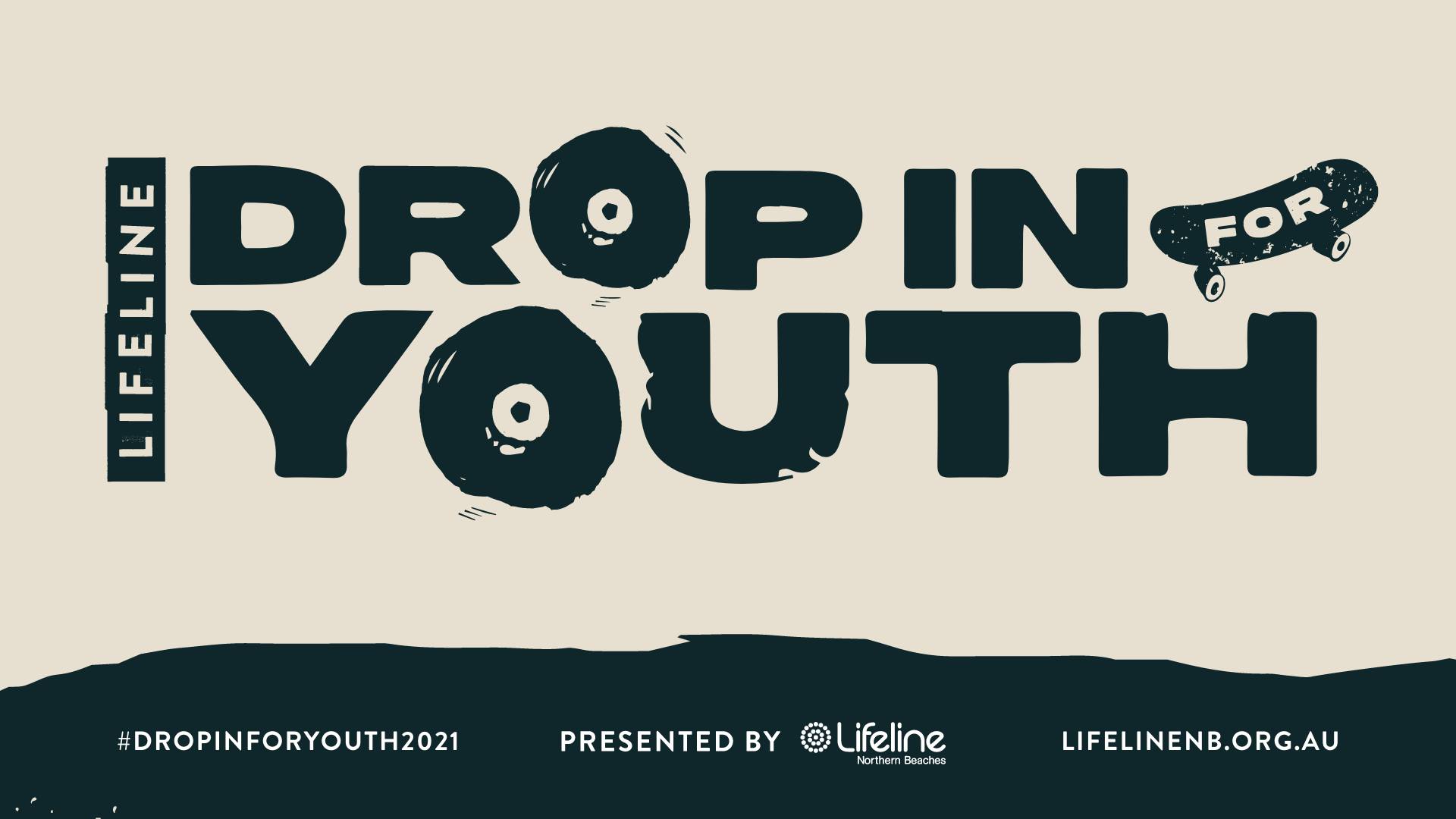
JOIN Ruby “Rockstar” Trew at DROP IN for YOUTH 2021
SKATE VERT COMP
+ Skate Park Fun - BEST Limbo, Highest Ollie, Board Jump and Trick Jam
OVER $10,000 in CASH - PRIZES - GIVEAWAYS to be WON!
DJ - FOOD TRUCKS - CAFE
SATURDAY 11 DECEMBER 2021 9:30AM
@MONA VALE SKATE PARK, 1604 Pittwater Road, Mona Vale
Saturday, 11 December 2021; 09:30 am- $15 entry online. $20 entry on event day, rego opens 9:30am. Vert Comp kicks off 10:30am.
Tickets: https://lifelinenb.grassrootz.com/drop-in-for-youth-2021
SKATE VERT COMP Kicks off 10:30am
Divisions:
- - 6 & Under - Girls and Boys
- - 8 & Under - Girls and Boys
- - 12 & Under - Girls and Boys
- - 16 & Under - Girls and Boys
- - Open Women’s - All Ages
- - Open Men’s - All Ages
- - Masters 45+ - Women's and Men's
EVENT T&C's
Participants can only compete in a single category for the event. Age Group participants are competing for prizes. Entry into the Open category is for anyone who wants to compete for prize money.
Open and Masters participants are competing for ca$h and GLORY!
Skate Park Fun - BEST Limbo, Highest Ollie, Board Jump and Trick Jam competitions are for everyone to have some fun!
Presented by: Avalon Youth Hub - Business Education Network (THE BEN) - Hurley ANZ - Lifeline Northern Beaches - Modest Eyewear Co - Monster Skate Park - Rotaract - Skater HQ
Lifeline Northern Beaches is offering FREE face-to-face counselling at the Avalon Youth Hub for people aged 15-24. Counselling is safe and confidential, and our service is available with or without a referral. For more information, visit www.lifelinenb.org.au/avalon-youth-hub. To book an appointment, call Lifeline Northern Beaches on 9949 5522 or email counselling@lifelinenb.org.au
Opportunity: The Search Begins For The Next Generation Of VFX And Animation Artists
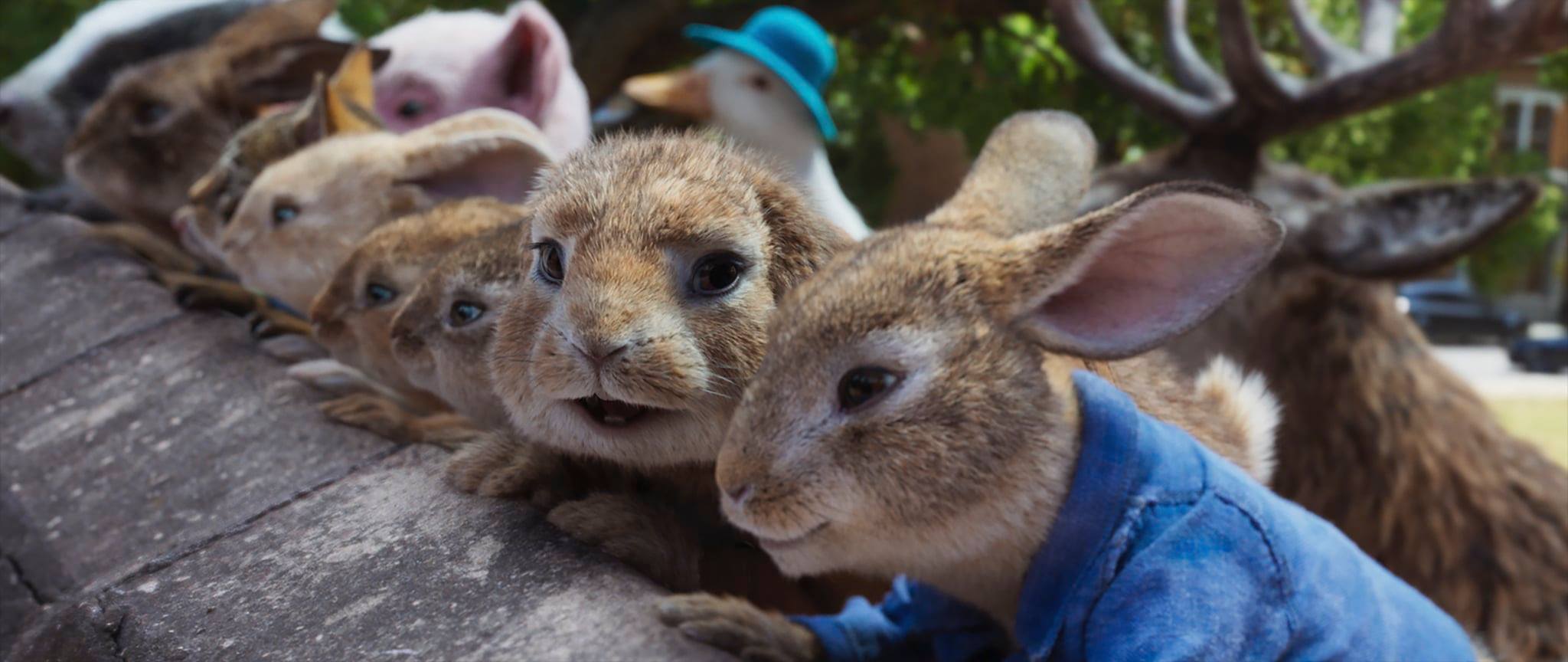
Opportunity: Free Training To Help Hospitality Industry Raise The Bar

ARTDECKO 2021 People’s Choice Awards Announced And Their Inspiration Revealed
Friday November 5, 2021
The People’s Choice Awards for this year’s ARTDECKO exhibition – an exhibition of skateboard art by local young people on the Beaches aged 12-24 has been announced.
This year 346 young people signed up for ARTDECKO and 2,368 votes tallied for the U/18 and O/18 People’s Choice Awards.
Northern Beaches Mayor said the annual event is a very popular youth program producing some incredible designs from emerging artists.
“ARTDECKO allows young people to express their creativity, display their artistic ability and then exhibit their finished piece alongside established and emerging artists across the Beaches,” Mayor Regan said.
“This program came at a pivotal time during Mental Health Month where young people were doing their best in what was a difficult time.
“Skateart is more popular than ever with the number of entrants almost doubling to previous years. The exhibition was made possible with a new online platform due to lockdown which is a first in the program’s history.
“And a special shout out to the Northern Beaches Youth Advisory Group who were heavily involved in the concept, delivery, and promotion of the event which was vital to its success.”
The People’s Choice and runners up of this year’s competition are:
Over 18’s:
Aleta Wassell - Burumerring Yanung (Wedge-Tailed Eagle Looking/Watching – pronounced boo-roo-meh-ring yah-noo-ng)
Over 18’s runners-up:
Jordan Lee – Skull Candy
Dane Bousfield – KFC Killers
Lucia Talbert – Just Walkin
Under 18’s:
Melissa Lamarque - My lockdown buddy
Under-18’s runners up:
Finlay Powell – A deck of cards
Aarohi Bansal – Ghibli Films
Monique Wassell – The water, land and their stories
Over 18’s People’s Choice Winner, 19-year-old Aleta Wassell from Cromer said she was proud to share her story and her culture as a proud Darkinjung woman.
“This work is about the Burumerring that guides me through life and supports me through my decisions and lessons,” Ms Wassell said.
“The spirit of a bird that soars so free will always be an inspiration of mine that sits close to my heart. It is a constant reminder to take a second away from my busy day to check in on my loved ones, to help a stranger out, show some kindness and most of all do something small for myself.
I hope to give away a few of the skate decks to young Aboriginal kids learning to skate.”

Burumerring Yanung by Aleta Wassell
Under 18’s People Choice Winner, 17-year-old Melissa Lamarque from Killarney Heights said her design was inspired by the companionship of her dog during the Sydney lockdown.
“This design is inspired by the Sydney lockdown and the relief that my dog provided when we went on long walks together within the Northern Beaches,” Ms Lamarque said.
“Her undivided attention and cuddles really helped me power through these difficult times. We kept each other sane and fit while looking out for each other’s mental health.”

My lockdown buddy by Melissa Lamarque
In addition to the weekly giveaways, the People’s Choice winners will receive five customised skateboard decks with their prints on them, courtesy of Skater HQ, who are long time partners with Council on this event.
“Congratulations to all the winners, enjoy your prizes and we look forward to seeing what amazing designs our local young people produce next year,” Mayor Regan said.
Council would like to thank local partner organisations, One Eighty, SkaterHQ and Surf Paints for their collaboration in making this exhibition successful.
You can view all the designs in this year’s ARTDECKO competition in Council's online exhibition
NESA Media Statement: HSC Major Projects
- Drama
- Textiles and Design
- Design and Technology
- Industrial Technology
- Visual Arts
- English Extension 2
- Music 1 (compositions)
- Music 2 and Extension (compositions and musicology)
- Society and Culture Personal Interest Project
HSC Online Help Guide
Stay Healthy - Stay Active: HSC 2021

COP26: a letter to school strikers from ‘the physicist behind net zero’
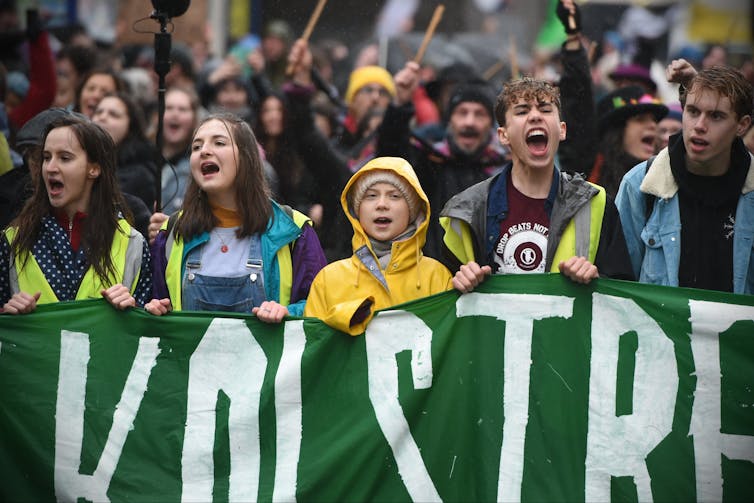
Dear school striker,
Well done on all you are doing – you seem to have made more impact on the climate issue in the past couple of years than I’ve managed in the previous three decades working away on it, and I’ve been described as the physicist behind net zero. Good luck on the demonstrations.
I have one suggestion. You are calling for climate action now, which of course we need – we needed it 20 years ago. But you will find the climate establishment gathered in Glasgow will, weirdly and frustratingly, clap enthusiastically when you shout at them, and then assure you they are listening and taking action.
Here’s why you should be sceptical. So far, at COP26, we’ve had a pledge to reduce methane emissions by 30%, which will cut global temperatures by about one tenth of a degree, pretty much the warming we’ve seen since the Paris Agreement was signed in 2015. Leaders have pledged to stop deforestation by 2030 – again. And some countries that were planning to stop using coal anyway have said they are going to stop using coal.
“Yes,” they will tell you with just a hint of condescension, “but every little helps and the climate issue is very complicated”.
This is the point where you should get angry. It isn’t complicated at all. We need to stop fossil fuels from causing global warming. All fossil fuels.
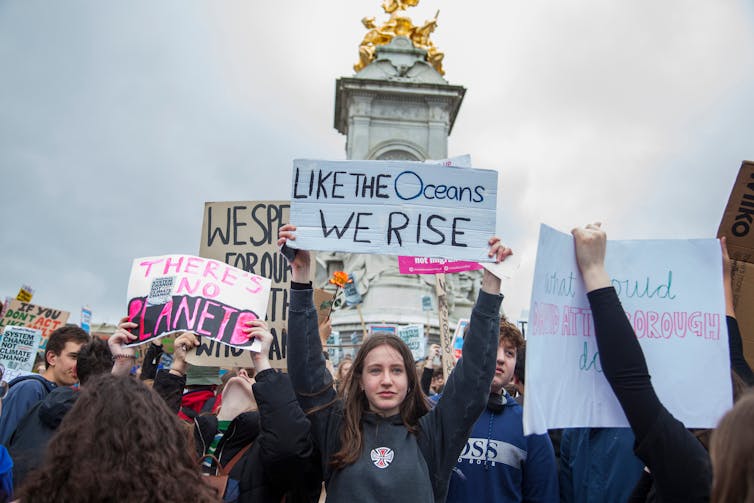
There are only two ways to do this: we either ban fossil fuels altogether, and enforce that ban, everywhere in the world, or we require anyone selling or using fossil fuels to ensure that the carbon dioxide they generate is safely and permanently disposed of and not just dumped into the atmosphere.
Now, you’ll find most people in the climate establishment, particularly the green movement who claim to be on your side, come down on the side of a ban. But that’s because they aren’t the ones who are going to have to implement it. You are.
When they say “we need to just stop using fossil fuels”, what they mean is “you (the school-striker generation) need to stop using fossil fuels”. And if you don’t, you’ll end up with catastrophic warming. They are like the first world war generals who used to send 19-year-olds up in balsa wood aeroplanes without parachutes so as to not “impair the fighting spirit”.
Listen to Myles Allen on Climate Fight, a podcast series from The Anthill, talking about the path to net zero.
Make The Producers Pay
There is another way, which would require the present generation of climate leaders doing a bit more, and make your lives massively easier in 30 years’ time. Which is, no doubt, why they don’t want to talk about it. This is to require anyone who wants to continue extracting and selling fossil fuels to dispose of the carbon dioxide generated by their activities and the fuels they sell. It needn’t be the same carbon dioxide, of course, but it needs to be disposed of safely and permanently, which, these days, means reinjecting it back underground. Unfortunately, until we get deforestation under control, storing carbon dioxide from fossil fuels in trees is neither safe nor permanent.
This would stop global warming, but no-one is even talking about it at COP26. Why not? Well, perhaps because paying for all that carbon dioxide disposal might affect the profits of oil and gas companies – and the lucrative royalties and taxes that governments cream off the fossil fuel industry. But before you start to feel too sorry for them, they are doing rather well right now, with oil and gas prices sky-rocketing. British prime minister Boris Johnson kicked off the conference invoking James Bond – well, if I were an oil and gas industry lobbyist, I’d be stroking my cat at how well things are going.
In the longer term, safe disposal of CO₂ will make fossil fuels more expensive, and no-one wants to admit this. But we don’t let water companies just dump our sewage in the rivers even though it would make our water bills smaller – and they could argue “the water was clean when we supplied it”. Why do we let fossil fuel companies fly-tip CO₂ into the atmosphere, claiming “the petrol wasn’t causing global warming when we sold it to you.”
You can change this. Reclaim net zero. The only net zero that matters for fossil fuels is what goes in and out of the earth’s crust. If the industry insists on continuing to dig fossil fuels up, it has to put the CO₂ back. This is the principle of carbon takeback, and it’s the only fair way to stop fossil fuels from causing global warming. Here’s something to shout at Friday’s protests:
Keep our skies blue, take back your CO₂.
Good luck,
Myles Allen, Director of Oxford Net Zero, University of Oxford

This story is part of The Conversation’s coverage on COP26, the Glasgow climate conference, by experts from around the world.
Amid a rising tide of climate news and stories, The Conversation is here to clear the air and make sure you get information you can trust. More. ![]()
Myles Allen, Professor of Geosystem Science, Director of Oxford Net Zero, University of Oxford
This article is republished from The Conversation under a Creative Commons license. Read the original article.
60 years after it first gazed at the skies, the Parkes dish is still making breakthroughs

The CSIRO’s 64-metre Parkes Radio Telescope was commissioned on October 31 1961. At the time it was the most advanced radio telescope in the world, incorporating many innovative features that have since become standard in all large-dish antennas.
Through its early discoveries it quickly became the leading instrument of its kind. Today, 60 years later, it is still arguably the finest single-dish radio telescope in the world. It is still performing world-class science and making discoveries that shape our understanding of the Universe.
The telescope’s origins date back to wartime radar research by the Radiophysics Laboratory, part of the Council for Scientific and Industrial Research (CSIR), the forerunner of the CSIRO. On the Sydney clifftops at Dover Heights, the laboratory developed radar for use in the Pacific theatre. When the second world war ended, the technology was redirected into peaceful applications, including studying radio waves from the Sun and beyond.

In 1946, British physicist Edward “Taffy” Bowen was appointed chief of the Radiophysics Laboratory. He had been one of the brilliant engineers, dubbed “boffins”, who developed radar as part of Britain’s secret prewar military research. The Radiophysics Laboratory had a dedicated radio astronomy group, led by the brilliant Joseph (Joe) Pawsey. Many of the group’s members went on to become leaders in the nascent field of radio astronomy, including Bernie Mills, Chris Christiansen, Paul Wild, Ruby Payne-Scott (the first female radio astronomer), and John Bolton.
While the group’s initial research focused on radio waves from the Sun, Bolton’s attention soon shifted to identifying other sources from farther afield. By the early 1950s, the Dover Heights radar dishes had discovered more than 100 sources of radio emissions from the Milky Way and beyond, including the signals from supernova explosions. These observations established the Radiophysics Laboratory as a world-leading centre of radio astronomy.
By 1954, the technology at Dover Heights was outdated and obsolete, prompting Bowen to initiate the next step for Australian radio astronomy: a state-of-the-art new radio telescope.
He decided the most versatile option was to build a large, fully steerable dish antenna. The eventual price tag was A$1.4 million (A$25.6 million in today’s terms) – far beyond CSIRO’s budget at the time.
The Menzies government agreed to fund the project, provided at least 50% of the money came from the private sector. Using his wartime contacts, Bowen secured A$250,000 each from the Carnegie Corporation and Rockefeller Foundation, plus a range of private Australian donations.
British firm Freeman Fox and Partners produced the detailed design, incorporating suggestions from legendary engineer Barnes Wallis, of “dambusters” fame. Based on the available budget and desired functionality, a diameter of 64 metres was agreed for the dish.
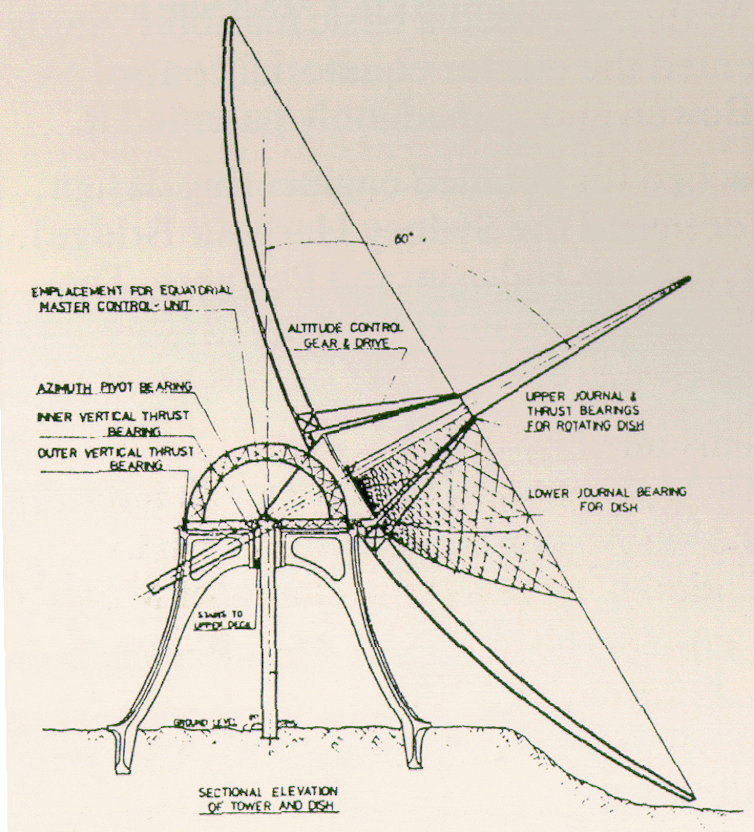
The chosen site was near the town of Parkes, about 350km west of Sydney. This location had favourable weather conditions and was free of local radio interference. The local council also enthusiastically offered to cover the cost of some of the earthworks.
In 2020, the local Wiradjuri people named the telescope Murriyang, a traditional name meaning “Skyworld”.
The telescope’s construction began in September 1959 and was completed just two years later. On October 31 1961, the Governor-General William Sidney, Viscount De l'Isle, officially opened the telescope in a ceremony attended by 500 guests.

Decades Of Discovery
John Bolton was appointed the founding director of the telescope. Under his dynamic, decade-long tenure, astronomers made a string of significant discoveries that established the dish as the premier scientific instrument in Australia.
Astronomers revealed the immense magnetic field of our Milky Way galaxy. A few months later, the telescope detected quasars, the most distant known objects in the Universe – a discovery that increased the size of the known Universe tenfold. To cap off a memorable first year, Parkes tracked the very first interplanetary space mission, Mariner 2, when it flew past Venus in December 1962.
In the 1970s, researchers discovered and mapped the immense molecular clouds interspersed through our galaxy. The study of pulsars – rotating stars that emit beams of radio waves, rather like a lighthouse – became a major field of research. Parkes has discovered more pulsars than all other radio observatories combined, including the only known double pulsar system, spotted in 2003.
In the 1990s, the distribution of galaxies was mapped to a distance of 300 million light years, revealing the complex structure of the Universe. More recently, Parkes discovered the first Fast Radio Burst – a short, intense blast of radio waves created by an as-yet unknown process. The telescope has also been involved in the Search for Extra-Terrestrial Intelligence (SETI), including the ten-year Breakthrough Listen project, which began in 2016.
Read more: A brief history: what we know so far about fast radio bursts across the universe
To the public, the telescope is perhaps best known for its space tracking, especially its role in the Apollo lunar missions. But it has also supported other significant missions such as NASA’s Voyager 2, which flew past Uranus and Neptune in the 1980s and crossed into interstellar space in 2018. In 1986, Parkes was the prime tracking station for the European Giotto mission to Halley’s Comet. And next year, Parkes will track some of the first commercial lunar landers.
Read more: Australia is still listening to Voyager 2 as NASA confirms the probe is now in interstellar space

Originally intended to operate for 20 years, the telscope’s longevity is a result of constant upgrades. Recent improvements include a new ultra-wideband receiver that can scan a huge range of radio frequencies, and CSIRO-developed “phased array feeds” (PAFs) that allow the telescope to observe up to 36 points in the sky at once. Work is now under way on a cryogenically cooled PAF that, when installed in 2022, will double this number. With these upgrades in place, a single receiver can be used to deliver more than 90% of current Parkes operations.

It’s hard to say how long the Parkes dish will continue to work. It depends on future upgrades and whether the telescope’s structure remains in good working order. But astronomers will always have a need for a large single-dish antenna.
Parkes has maintained its world-leading position in radio astronomy by constantly adapting to meet new requirements. Today it stands as an icon of Australian science and achievement. Sixty years after it first trained its eye on the sky, the future still looks bright at Parkes.![]()
John Sarkissian, Operations Scientist, CSIRO
This article is republished from The Conversation under a Creative Commons license. Read the original article.
Australia is putting a rover on the Moon in 2024 to search for water
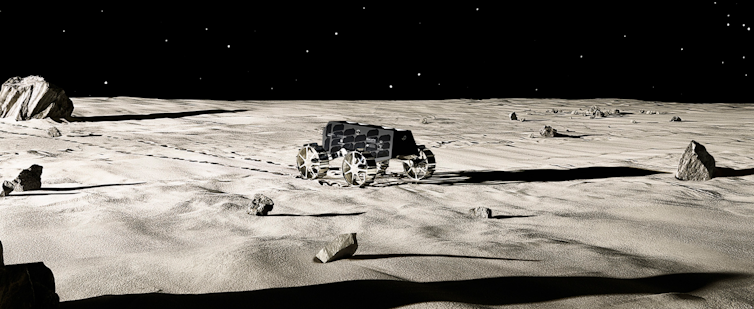
Last month the Australian Space Agency announced plans to send an Australian-made rover to the Moon by as early as 2026, under a deal with NASA. The rover will collect lunar soil containing oxygen, which could eventually be used to support human life in space.
Although the deal with NASA made headlines, a separate mission conducted by private companies in Australia and Canada, in conjunction with the University of Technology Sydney, may see Australian technology hunting water on the Moon as soon as mid-2024.
If all goes according to plan, it will be the first rover with Australian-made components to make it to the Moon.
Roving In Search Of Water
The ten-kilogram rover, measuring 60x60x50cm, will be launched on board the Hakuto lander made by ispace, a lunar robotic exploration company based in Japan.
The rover itself, also built by ispace, will have an integrated robotic arm created by the private companies Stardust Technologies (based in Canada) and Australia’s EXPLOR Space Technology (of which I am one of the founders).
Using cameras and sensors, the arm will collect high-resolution visual and haptic data to be sent back to the mission control centre at the University of Technology Sydney.
It will also collect information on the physical and chemical composition of lunar dust, soil and rocks — specifically with a goal of finding water. We know water is present within the Moon’s soil, but we have yet to find a way to extract it for practical use.
Read more: Water on the Moon: research unveils its type and abundance – boosting exploration plans
The big push now is to identify regions on the Moon where water sources are more abundant, and which can deliver more usable water for human consumption, sample processing, mining operations and food growth.
This would also set the foundation for the establishment of a manned Moon base, which could serve as a transit station for further space exploration (including on Mars).

Moon-Grade Materials
Once the Hakuto lander takes off, the first challenge will be to ensure it lands successfully with the rover intact. The rover will have to survive an extreme environment on the lunar surface.
As the moon rotates relative to the Sun, it experiences day and night cycles, just like Earth. But one day on the Moon lasts 29.5 Earth days. And surface temperatures shift dramatically during this time, reaching up to 127℃ during the day and falling as low as -173℃ at night.
The rover and robotic arm will also need to withstand the effects of space radiation, vibrations during launch, shock from the launch and landing, and exposure to dust and water.
At the same time, the arm must be light enough to conduct advanced manoeuvres, such as grabbing and collecting moon rocks. Advanced space-grade aluminium developed in Australia will help protect it from damage.

The team behind the mission is currently in the process of testing different designs of the robotic arm, and figuring out the best way to integrate it with the rover. It will be tested together with the rover at a new lunar test bed, at the EXPLOR Space Technologies facility in New South Wales.
Like the one used by NASA, this test bed can mimic the physical and chemical conditions on the Moon. It will be critical to determining whether the rover can stay mobile and continue to function under different environmental stressors.
Step Into Your Astronaut Boots
The rover will also send back data that allows people on Earth to experience the Moon with virtual reality (VR) goggles and a sensor glove. Haptic data collected back by the robotic arm will essentially let us “feel” anything the arm touches on the lunar surface.
We plan to make the experience available as a free app — and hope it inspires future generations of space explorers.
Joshua Chou, Senior lecturer, University of Technology Sydney
This article is republished from The Conversation under a Creative Commons license. Read the original article.
Voter ID is a bad idea. Here’s why
Graeme Orr, The University of QueenslandThe Morrison government is pushing legislation to mandate voter ID at polling places. Contrary to some critics, what it proposes will not create US-style “voter suppression”. But it is still an unnecessary idea at an inappropriate time.
Countries like Australia, New Zealand and the United Kingdom (until now at least) do not require electors to show ID to vote. Many other systems do.
Insecurity about security is a conservative trope. So it is natural for political conservatives, temperamentally, to favour voter ID, with the argument being it is an “integrity” measure. Social democrats, on the other hand, are more trusting and concerned to ensure everyone can and does vote.
The Australian proposal lists an array of documents as acceptable ID. Photo ID such as a driver’s licence is not mandatory; a credit card or utility bill would suffice. “Documents” in law now include electronic records, which is important given how few people receive paper utility bills.
If an elector does not bring ID, or it is rejected (say for a misspelled name), they are to be offered a “provisional” vote. That is a rigmarole involving extra forms and delays. But it is a buffer - imagine a remote voter driving an hour to a polling station having forgotten their wallet.
Young people, the very elderly and Indigenous people are all less likely to have such ID. To address the latter, a document from an Indigenous land council or similar agency will also count. When the LNP in Queensland briefly introduced voter ID in 2013-15, it was clear remote electors were more likely to have problems with ID.
Cost In The Time Of COVID
The UK Cabinet Office estimates voter ID there will cost in the order of £20 million (A$36.7 million) per election. That is for mandatory photo ID. The direct cost in Australia will be less, if not insignificant. The Australian Electoral Commission will need to mail proof of enrolment to each elector as one form of ID.
There are also indirect costs. The most obvious is in training - and trying to ensure consistency among tens of thousands of casual poll workers. Inevitably, some forms of ID will be accepted in some polling places and not others. Think of bills on cracked mobile screens, or cards with minor differences to the name on the electoral roll.
Most of all, with Australia reopening, COVID will be spreading across states that have never had a real wave. Voter ID will add to processing time for millions of electors. Those whose ID is rejected will have to join separate queues to make a fussy “declaration” vote.
Finally, those declaration votes enter a black box. Unlike some US states, electors are not told whether their provisional vote was ever accepted into the count. This in itself will hamper, not enhance, trust.
One group of electors will not need to produce ID: postal voters. Asking (predominantly older) postal voters to scan or copy ID is a step too far, as they already sign and witness forms to vote.
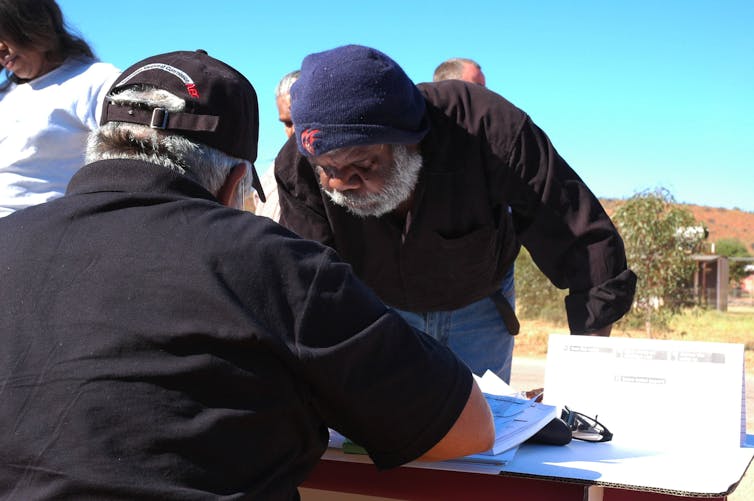
What Does The Constitution Say?
On voting “rights”, next to nothing. But in 2007, the High Court implied a universal franchise for Australian citizens. Then, in 2010, it struck down the early closing of electoral rolls as an undue burden on the ability to vote.
In doing so, it said parliament cannot impose such burdens without evidence. The “evidence” to support voter ID is the intuition that voters should produce ID. The benefit of voter ID is said to be enhancing perceptions of integrity.
This may be a fair call in the abstract. Yet in reality, Australia has high levels of trust in our independent and thorough electoral processes. Any lack of trust buzzes around parties as hierarchical entities, their funding and accountability, not electoral administration.
Perceptions of risk can also be circular, if not manipulated. By playing up integrity risks, regardless of actual evidence, you can generate concerns that you then use to justify new rules. (We also see this in debates about electoral donations.)
As long as the law allows electors without ID to cast a declaration vote without excessive palaver, the High Court will not veto voter ID. In any event, the law cannot be challenged before it is implemented. Any plaintiff claiming to be affected before the election will likely be rebuffed with “go and organise ID”.
Read more: From robo calls to spam texts: annoying campaign tricks that are legal
Voter ID Cuts Across Compulsory Voting
Most of all, voter ID is a dull idea in a country that has required people to enrol to vote for 110 years, and to turn out to vote since 1924.
Quite why we need voter ID is not clear. Most European countries do. But they have national ID cards. That is, every citizen, equally, has official ID. Such ID is something liberals in Australia fought against.
Ultimately, electoral integrity comes from having the most thorough roll and the highest turnout possible. Australia has a good record here, thanks to compulsion and direct enrolment laws.
Short of evidence of rogue electors impersonating other voters, voter ID is an unnecessary bureaucratic requirement, at an inappropriate point in a pandemic.![]()
Graeme Orr, Professor of Law, The University of Queensland
This article is republished from The Conversation under a Creative Commons license. Read the original article.
Friday essay: will the perfect men’s dress ever exist – and would men wear it?

More famous men are wearing dresses: from actor Billy Porter on the red carpet to singer-songwriter Harry Styles on the cover of Vogue. They have prompted much commentary, both positive and negative, leading fashion commentators to ask if frocks might become a regular part of men’s sartorial landscape.

At this year’s Met Gala, racing car driver Lewis Hamilton wore a white lace dress over a black suit and singer Troye Sivan wore a simple black gown. More recently, rapper Lil Nas X wore a purple suit with a matching train to the MTV Video Music Awards and a Cinderella-style gown at an earlier award ceremony.
The trend signifies a return to ancient sartorial norms, when more androgynous clothing was accepted and, indeed, required.
Such clothes were not “dresses” as we understand them today: the dress is a garment that has become indelibly “feminine”. But could skirts and dresses become mainstream garb for 21st century men beyond these celebrity trailblazers?
Our contemporary construct of masculinity is, of course, relatively recent. Until the early 20th century, boys and girls wore dresses until boys were “breeched” (put into breeches or “short trousers”) at around seven years old.
Pink was a manly colour, and it was almost impossible to tell boy and girl toddlers apart.
Read more: Girlie or girl power? Breast cancer and the cult(ure) of pink
Androgynous Frocks
Before the 15th century, much clothing for men and women was fairly androgynous, particularly outside Europe – where in many cultures this continues today.

Japanese kimono are robes with only subtle hints at gender difference. In parts of North Africa, the jellabiya – a long, loose robe perfect for the warm climate – is worn daily by men and women.
Ancient Egyptian men, including pharaohs, wore the schenti, a wrap skirt similar to a kilt. This garment was so practical and versatile it remained popular for over 2,000 years.
Ancient Greece and Rome saw universal wearing of the tunica, a simple gown that was shorter and looser for men, but constructed the same way for both sexes.
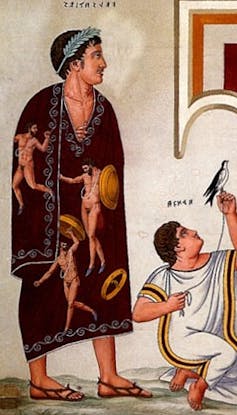
The elite wore longer chiton and toga, which could be more elaborately accessorised to indicate the wearer’s gender. In these societies, the higher a man was on the social ladder, the longer his gown.
Divided garments (not then known as “trousers”) were generally worn only by soldiers and the working class. To ancient Greeks and Romans, leg coverings were more representative of the barbarian than powerful, civilised men.
From 800 AD, bifurcated (divided, two-legged) styles slowly emerged in the Christian world, propagated by the medieval emperor Charlemagne as a way of linking physicality and aggression with new European concepts of “manliness”. Such garments later came to symbolise (male) control and authority.
This was a gradual process, however. In medieval Europe, men and women wore long, layered clothing and tunics until the slow advent of tailoring in the 1400s. Even armour, the most “macho” of male attire, could still feature a metal “skirt” pleated similarly to contemporary tunics.
From the 15th century on, shorter tunics took hold for men, beneath which they could wear hose or stockings and, later, breeches.

Aside from brief outlier trends, (for example the lampooned and short-lived “petticoat breeches”) men’s hemlines continued to move north.
The advent of stockings and a codpiece and, until the 1820s, relatively tight-fitting pants for men, acted as a non-verbal reminder of their political and economic power.
This was in stark contrast to the treatment of women’s legs, which as one writer put it in 1818:
although dressed, are […] immediately connected with parts which are not, and which decency strictly conceals from view.
Repression Of Expression
Women fought for a long time to wear trousers, making discreet strides in the adoption of bloomers as underwear in the 19th century. While gradually accepted as trouser-wearers in the early 20th century (and in the professional realm from the late 1960s), the same freedom of clothing choice has not been given to men.
For women, wearing trousers represented physical freedom, making certain jobs – and therefore, financial freedom – easier. Men do not have that same need, in a practical sense, to adopt dresses.
Arguably, a dress does not make any aspect of life easier, but it does allow an individual to express themselves in different ways. Restricting this suggests repression of far more than physical movement.
It could be argued that since the 18th century, (in the west at least), men have played second fiddle to women in terms of glamour and excitement in clothing. Contrary to popular belief, it was generally women who imposed what we now see as extravagant and restrictive sartorial customs, such as the cage crinoline. For many women, fashion was the one area of life over which they had some control.
Read more: From 'macaronis' to mohawks, men's fashion has always been political
During the 19th century, an era famously described by psychologist Carl Flugel as the “great male renunciation” of brilliant fashion, men had eye-wateringly little choice of garments compared to women. The monopoly of the (male) suit has perhaps been a result of this one-sidedness. Promoting dresses for men could redress the imbalance.

Fitting Dresses To Men
If dresses are to become a genuine part of menswear once again, we need first to establish what differences, if any, there will be with women’s. How will the fit be determined? How will they be worn?
This is not necessarily the same as producing androgynous or gender fluid clothes. It is about dresses that will allow men, who wish it, to still feel masculine – as trousers can make women feel feminine.
While fashion slacks were often made to conform to a woman’s body (putting aside utilitarian and wartime uniforms) there seem to be very few dresses made exclusively for the male physique.
Billy Porter’s velvet tuxedo gown worn to the 2019 Oscars was an exception. A hybrid male and female garment, it used black to create a link to contemporary womenswear, and men’s traditional evening wear. Crafted by designer Christian Siriano, it consisted of a tuxedo-style bodice with voluminous, ballgown skirt.

Read more: And the best penguin Oscar ... a closer look at the tuxedo
This dress was elite rather than mainstream fashion, created exclusively for Porter. Styles’ ethereal Gucci number on the Vogue cover is likewise hardly accessible to the everyday consumer, demanding a high level of confidence to pull off.
The same can be said of frocks and frock-spirations chosen by Carl Clemons-Hopkins at the 2021 Emmys and Queer Eye’s Jonathan Van Ness at the Creative Arts Emmys in 2018.

As Oscar Wilde put it when discussing women’s dress reform in the 1880s:
If the divided skirt is to be of any positive value, it must give up all idea of being identical in appearance with an ordinary skirt … [it must] … sacrifice its foolish frills and flounces.
Perhaps men’s dresses should aim for that same end: not to masquerade as anything else, but to take on a life of their own as new, separate garments.
A Viable Option?
Examples such as Porter’s and Styles’ frocks prompt intrigued debate. Other examples of men wearing dresses are usually associated with transvestism or those undergoing gender reassignment.
Huge progress over the past few decades has made their visibility and acceptance far more widespread, along with gender fluid and queer identity becoming a regular part of the fashion landscape, thanks to designers such as Harris Reed, Telfar Clemens and Charles Jeffrey Loverboy. Each, in their own way, are creating and championing fluid fashion, showing the world how it can be done.
However, we are not yet at the point where most men would consider a dress a viable option, or where a man wearing a dress would not provoke assumptions around sexuality or gender identity. We also seem to be at a crossroads in terms of how men in dresses are received by different communities.

A controversy arose earlier this year when cisgender man, the rapper Kid Cudi, performed on Saturday Night Live wearing a dress intended to pay tribute to Kurt Cobain.
In 1993, Cobain had boldly donned a similarly patterned, but shorter frock on the cover of The Face magazine, attracting considerable backlash.
In 2021, wearing a fuller, longer, more classically “feminine” style, Cudi was met largely with praise. However, some commentators – particularly those from the LGBTQI community – felt his choice was nothing but a “costume” worn by a performer.
Some pointed out that what was a publicity stunt for him amounted to a “life and death” decision, for which trans people have been severely bullied. The reality is that however casually a man might wear a dress, and whatever his motivations for doing so, the choice is fraught with political, emotional and social ramifications. It will be commented on and judged, positively or negatively.
Earlier this year, singer Post Malone’s stylist Catherine Hahn put the singer in a dress, another tribute to Cobain.
The success of this outfit inspired her to create “a unisex dress that could be worn every day. To work, to school, to skateboard in, or on a date.” The result is a calf-length, oversized plaid shirt that recalls 90s grunge styles and certainly offers a fun, fresh, casual option for men.
However, it is still unisex, rather than aimed specifically at men. Its shirt-like cut makes it a familiar, non-threatening segue for those wishing to experiment with dresses. This style is the closest we have seen to a potentially mainstream, workable male frock option.
Dresses are likely to remain a novelty for many men, a defiant show of bravery and individuality akin to the female pioneers of the rational and aesthetic dress movements of the 19th and 20th centuries.
Mind you, during this pandemic, there has been a surge in male skirt designs by the likes of Burberry and Stefan Cooke.
Many of these take inspiration from the traditional “man skirt”, the kilt. But longer, calf-length, pleated and A-line examples have been championed too. More men may have felt comfortable experimenting with a skirt or dress during the privacy of lockdown.
The year 2020 was a seismic shift in life as well as fashion. But given the highly gendered and ingrained nature of clothing codes, it seems unlikely we will see men’s dresses go mainstream anytime soon.![]()
Lydia Edwards, Fashion historian, Edith Cowan University
This article is republished from The Conversation under a Creative Commons license. Read the original article.
Students are told not to use Wikipedia for research. But it’s a trustworthy source

At the start of each university year, we ask first-year students a question: how many have been told by their secondary teachers not to use Wikipedia? Without fail, nearly every hand shoots up. Wikipedia offers free and reliable information instantly. So why do teachers almost universally distrust it?
Wikipedia has community-enforced policies on neutrality, reliability and notability. This means all information “must be presented accurately and without bias”; sources must come from a third party; and a Wikipedia article is notable and should be created if there has been “third-party coverage of the topic in reliable sources”.
Wikipedia is free, non-profit, and has been operating for over two decades, making it an internet success story. At a time when it’s increasingly difficult to separate truth from falsehood, Wikipedia is an accessible tool for fact-checking and fighting misinformation.
Why Is Wikipedia So Reliable?
Many teachers point out that anyone can edit a Wikipedia page, not just experts on the subject. But this doesn’t make Wikipedia’s information unreliable. It’s virtually impossible, for instance, for conspiracies to remain published on Wikipedia.
Read more: On the job with a ‘Wikipedian in residence’
For popular articles, Wikipedia’s online community of volunteers, administrators and bots ensure edits are based on reliable citations. Popular articles are reviewed thousands of times. Some media experts, such as Amy Bruckman, a professor at the Georgia Institute of Technology’s computing centre, argue that because of this painstaking process, a highly-edited article on Wikipedia might be the most reliable source of information ever created.
Traditional academic articles – the most common source of scientific evidence – are typically only peer-reviewed by up to three people and then never edited again.
Read more: Explainer: what is peer review?
Less frequently edited articles on Wikipedia might be less reliable than popular ones. But it’s easy to find out how an article has been created and modified on Wikipedia. All modifications to an article are archived in its “history” page. Disputes between editors about the article’s content are documented in its “talk” page.
To use Wikipedia effectively, school students need to be taught to find and analyse these pages of an article, so they can quickly assess the article’s reliability.
Is Information On Wikipedia Too Shallow?
Many teachers also argue the information on Wikipedia is too basic, particularly for tertiary students. This argument supposes all fact-checking must involve deep engagement. But this is not best practice for conducting initial investigation into a subject online. Deep research needs to come later, once the validity of the source has been established.
Still, some teachers are horrified by the idea students need to be taught to assess information quickly and superficially. If you look up the general capabilities in the Australian Curriculum, you will find “critical and creative thinking” encourages deep, broad reflection. Educators who conflate “critical” and “media” literacy may be inclined to believe analysis of online material must be slow and thorough.

Yet the reality is we live in an “attention economy” where everyone and everything on the internet is vying for our attention. Our time is precious, so engaging deeply with spurious online content, and potentially falling down misinformation rabbit holes, wastes a most valuable commodity – our attention.
Wikipedia Can Be A Tool For Better Media Literacy
Research suggests Australian children are not getting sufficient instruction in spotting fake news. Only one in five young Australians in 2020 reported having a lesson during the past year that helped them decide whether news stories could be trusted.
Our students clearly need more media literacy education, and Wikipedia can be a good media literacy instrument. One way is to use it is with “lateral reading”. This means when faced with an unfamiliar online claim, students should leave the web page they’re on and open a new browser tab. They can then investigate what trusted sources say about the claim.
Wikipedia is the perfect classroom resource for this purpose, even for primary-aged students. When first encountering unfamiliar information, students can be encouraged to go to the relevant Wikipedia page to check reliability. If the unknown information isn’t verifiable, they can discard it and move on.
More experienced fact-checkers can also beeline to the authoritative references at the bottom of each Wikipedia article.
In the future, we hope first-year university students enter our classrooms already understanding the value of Wikipedia. This will mean a widespread cultural shift has taken place in Australian primary and secondary schools. In a time of climate change and pandemics, everyone needs to be able to separate fact from fiction. Wikipedia can be part of the remedy.![]()
Rachel Cunneen, Senior Lecturer in English and Literacy Education, Student Success and LANTITE coordinator, University of Canberra and Mathieu O'Neil, Associate Professor of Communication, News and Media Research Centre, University of Canberra
This article is republished from The Conversation under a Creative Commons license. Read the original article.
Professor who tweeted the coronavirus genome, paving the way for new vaccines, scoops major Australian science award

The role played by University of Sydney Professor Edward Holmes in the COVID pandemic is already the stuff of legend. His decision to tweet the genome of SARS-CoV-2 on January 11 2020, making the data freely available to everyone, sparked urgent work in labs around the world to develop a test and a vaccine.
Within days, the first diagnostic tests were available, and that weekend, scientists at Moderna and Pfizer are reported to have downloaded the genome and set to work on their mRNA vaccines, bringing a new technology to medicine in record time.
But it is the deeper story I find most exciting. It is a story of excellent, painstaking research over many years, as the scientific community developed an understanding of genomics and virus behaviour, built a record of genetic sequences, and developed techniques to intervene at the tiniest scales.
This foundational work meant that when the pandemic struck, science was ready. Reports began to appear of a novel coronavirus causing illness in the Chinese city of Wuhan at the end of December 2019; Holmes’s tweet detailing the full genome of the virus was posted less than a fortnight later.
Read more: 4 of our greatest achievements in vaccine science (that led to COVID vaccines)
It is also a story of scientific expertise and confidence. While most of the world was coming to terms with the concept of a coronavirus, Holmes and other experts realised immediately what they were dealing with, and knew their first obligation was to share the information so researchers and their industry colleagues could go to work.
And it is a story of collaboration. As Holmes has pointed out, he would not have had the genome to share without deep scientific relationships. That day, he was on the phone with a colleague in China, Zhang Yongzhen, who held the genome information, and another in Edinburgh, who helped prepare the data for release.
A Prizewinning Effort
The lessons for scientific endeavour are clear, and Holmes is now the deserved recipient of the Prime Minister’s Prize for Science, presented at a virtual event last night.
The pandemic has demonstrated the vital importance of global research collaborations and open sharing of findings, which makes science faster, more efficient and more accurate.
More than 400,000 papers have been written on COVID. Their open publication has allowed the development of vaccines and therapeutics at breakneck speed, saving millions of lives. The pandemic has highlighted the benefits of making research findings openly available for researchers, policy-makers, educators and others, and I am now championing an open-access approach for Australia.
One of the welcome aspects of the Prime Minister’s Science Prizes is the recognition it gives to great science teaching, which plays a crucial role in inspiring our young people to start on that path towards a scientific career. This year’s awards celebrated the work of Scott Graham, who has inspired students at Barker College in Hornsby, NSW, to study agriculture, and Megan Hayes, a STEM specialist at Mudgeeraba Creek State School in Queensland.
Four other scientists were recognised at the awards, all of whom demonstrate the drive that underpins great science and propels its practitioners to find ways to benefit the community.
Professor Sherene Loi, a medical oncologist at Peter MacCallum Cancer Centre, was recognised for her world-leading breast-cancer research that led to the development of a biomarker that is now routine in breast-cancer diagnosis in many countries.
Dr Keith Bannister, a research engineer with CSIRO Space and Astronomy, modified the CSIRO’s Australian Square Kilometre Array Pathfinder radio telescope to increase the detection rate of “fast radio bursts”. These mysterious bursts of intense energy from distant galaxies last just milliseconds but can release as much energy as the Sun emits in decades.
Bannister designed and built a system to preserve the data from the CSIRO’s radio telescope, and to track the source of the bursts.
Read more: A brief history: what we know so far about fast radio bursts across the universe
Associate Professor Michael Bowen, at the University of Sydney, discovered a molecule with potential for treating brain disorders and tackling the opioid epidemic. This has led to a world-first clinical trial, now starting in Australia.
Also at the University of Sydney, Professor Anthony Weiss was recognised for developing and commercialising a natural “squirtable” skin-repair product, based on the protein that gives human tissue its elasticity. A spin-off company he founded has now been sold to one of the world’s largest biopharmaceutical companies for A$334 million.
The achievements of these scientists are so important to Australia, as are the efforts of the many researchers and technologists who sit behind them doing foundational work that builds over years, and collaborating in teams to tackle the difficult problems that are part and parcel of scientific discovery and impact.
Their achievements give me confidence we will solve today’s great challenges as we place science at the heart of efforts to tackle climate resilience, respond to the pandemic, and build the high-tech industries of the future.![]()
Cathy Foley, Australia's Chief Scientist, Office of the Chief Scientist
This article is republished from The Conversation under a Creative Commons license. Read the original article.
Larger than life – sculptor Margel Hinder carved light and form and left a legacy
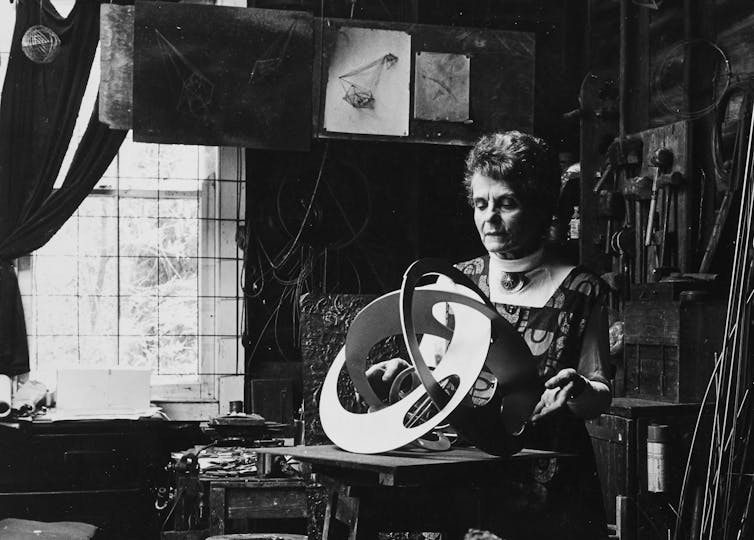
Many years ago my daily pleasure was to walk past a Margel Hinder masterpiece, the Civic Park Fountain in Newcastle. With water spraying in rhythmic patterns, it would bring a smile to my face for its beauty, the way the streams caught the light.
Fountains can’t be moved for an exhibition, of course, but Hinder’s Civic Park Fountain and her sadly decommissioned Northpoint Fountain of 1975 have been digitally simulated by Andrew Yip for Margel Hinder: Modern in Motion, a joint project of Heide Museum of Modern Art and the Art Gallery of New South Wales.
Throughout the 1960s and 70s Hinder was commissioned to create sculptures for Australia’s public places, including the Reserve Bank in Sydney, Woden Town Square in Canberra and the Telecommunications Building in Adelaide. So her work has hardly been hidden from the public gaze.
But for many years the dominant book on Australian art was Bernard Smith’s Australian Painting. As a result, artists in other media are less well known than they deserve to be.
The Art Gallery of New South Wales began collecting her work in 1949. Nevertheless the range of the sculptures in the current exhibition is still a surprise. With mostly small works, this is sculpture at its most intimate – welcoming the viewer into a world where asymmetrical form rules.

American By Birth
Margel Ina Harris was born in New York, brought up in Buffalo, and lived in Boston with a family that encouraged creativity.
In 1929, at the age of 23, she went to a summer school in upstate New York to work with the modernist artist Emil Bisttram. There she met young Australian artist and designer Frank Hinder. They married in 1930 and daughter Enid was born the following year.
In 1933, at the depths of the Great Depression, the Hinders travelled to New Mexico, again to work with Bisstram. Margel took nourishment from the dry sculptural Mesa landscapes of Taos – and observed the rhythms and of the Pueblo women as they went about their daily business. Her approach to form began to change from modelling to carving.

Read more: Joy Hester – a body of work, remembered at last
On the family’s subsequent slow sea voyage from the US to Sydney, she carved her first wooden relief sculpture, Taos Women. After arriving in Sydney she carved Pueblo Indian, a simplified solid form emerging from the wood.
Sydney’s art establishment was decidedly conservative. Nevertheless the Hinders soon befriended a small group of modernist painters and thinkers including Grace Crowley, Ralph Balson, Eleonore Lange and Rah Fizelle.
In Gerald Lewers, Margel found a fellow sculptor who understood her exploration of wood as form. She later wrote that Gerald Lewers “was the most developed of any sculptors here in Sydney”.
In 1939 she made Mother and Child, a work less about the subject and more about honouring the material from which it is made.
Light Enters
Her methods changed again during and after the second world war. The Hinders moved to Canberra where Frank worked on camouflage projects for the Department of Home Security and Margel made small wooden models.
After the war they returned to Gordon in Sydney and a house that backed onto the bush. There birds would come to feed in the elaborate sculpture Frank made for them. Margel worked in her studio, surrounded by the light and sounds of the bush.
Her work became more constructive. And a new element entered — light. She sometimes used hand-coloured Perspex to get particular effects.

She shaped and soldered wire to cast shadows. Revolving Random Dots (1953) spins using a swivel mechanism, while movement in other constructions is aided by a carefully placed fan.
Many of her small sculptures were first exhibited at the NSW Contemporary Art Society, the only ready exhibition venue for modernist art.
At the same time, Hinder was entering public sculpture competitions. Most of these were local events, associated with the post-war building boom. But in 1953 she was awarded third prize out of 3502 entries in an international competition for a memorial to the Unknown Political Prisoner. Her entry shows an abstract embrace of an ethereal shape. Along with work by the other finalists, her maquette was exhibited at the Tate in London.

Read more: Friday essay: the Melbourne bookshop that ignited Australian modernism
Going Big
Hinder’s growing reputation led to her first public commission for a large sculpture in Sydney’s newly built Western Assurance Company Building.
The sculptures made for public spaces are bolder, more assertive than her smaller private sculptures. This is art made to withstand the elements but also bold statements disrupting the straight lines of corporate architecture.
The fate of the Western Assurance work is a reminder that sculptors face an extra peril in preserving their art. In the 1980s the building and the sculpture were demolished. Fortunately a passer-by alerted the Hinders who were able to salvage the pieces. The work was eventually reassembled at the University of Technology where it remains on permanent view.
Hinder was determined never to be defined by her gender or as a wife and mother. This was not only evident in her own single-minded pursuit of art, but in her frequent advice to young women that they must persist in their careers and not abandon art after having children. Talent, she believed, should not be wasted.
In the 1950s and 60s there was considerable cultural pressure on Australian women to limit themselves to domesticity. Hinder’s remarkable career was supported at every step by Frank, who sometimes did the heavy lifting (literally) in the creation of her larger works.
Their closeness might be one reason why previous survey exhibitions at Newcastle, Bathurst and the Art Gallery of NSW presented their work together. Now it is time for her art to stand alone.

Margel Hinder: Modern in Motion is at Heide Museum of Modern Art until 6 February 2022.![]()
Joanna Mendelssohn, Principal Fellow (Hon), Victorian College of the Arts, University of Melbourne. Editor in Chief, Design and Art of Australia Online, The University of Melbourne
This article is republished from The Conversation under a Creative Commons license. Read the original article.
New RFS Helicopters And Aviation Centre Of Excellence For Regional NSW
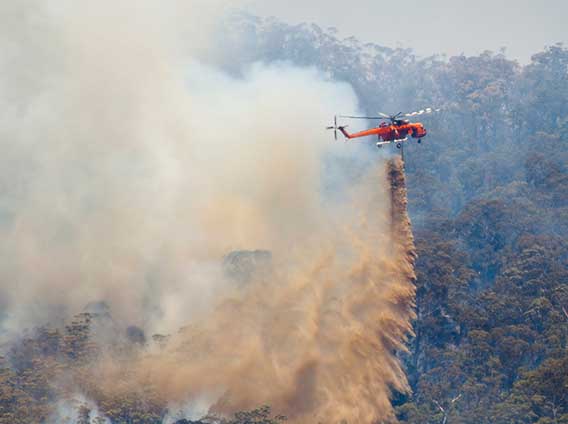 Regional communities across NSW are set to benefit from an enhanced emergency response and investment, as the NSW Government bases NSW Rural Fire Service (RFS) multi-purposed firefighting helicopters at three key regional locations and officially turns the first sod for the RFS Aviation Centre of Excellence.
Regional communities across NSW are set to benefit from an enhanced emergency response and investment, as the NSW Government bases NSW Rural Fire Service (RFS) multi-purposed firefighting helicopters at three key regional locations and officially turns the first sod for the RFS Aviation Centre of Excellence. Becoming Silent; The Sounds Of Birds In Spring Show A Decline
Number Of Premature Deaths Worldwide Caused By Consumption In G20 Nations
Final Route Announced For The Dungowan Dam Pipeline
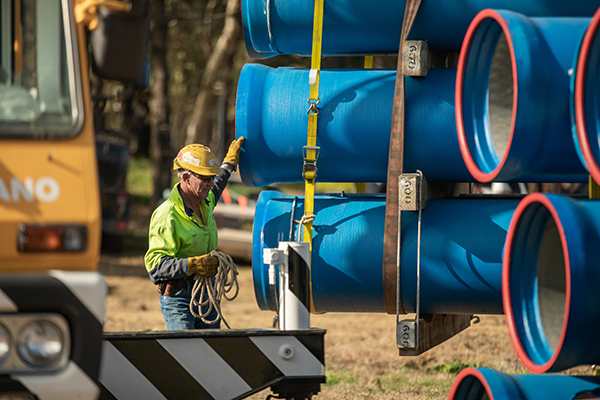 Plans for greater water security in Tamworth and the Peel Valley have reached a significant milestone with the announcement today (October 28, 2021) of the final route for the new 55 kilometre Dungowan Dam pipeline.
Plans for greater water security in Tamworth and the Peel Valley have reached a significant milestone with the announcement today (October 28, 2021) of the final route for the new 55 kilometre Dungowan Dam pipeline.Sydney Set For Thousands Of New Homes: Wilton Growth Area + Rhodes Place Strategy
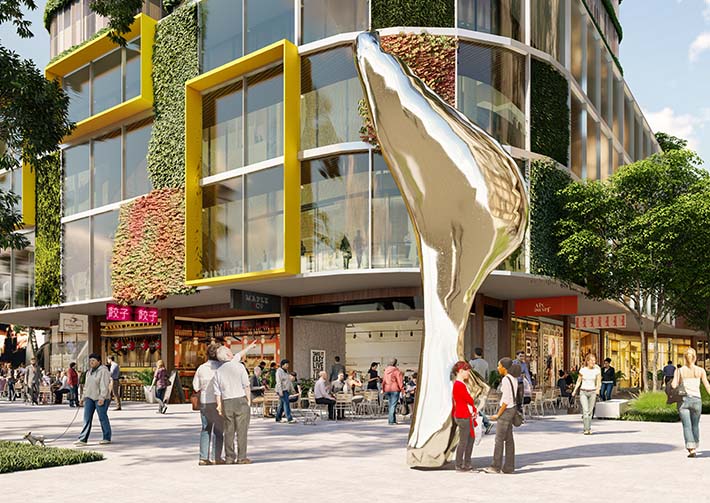 A further 8,000 jobs will be created and almost 6,000 new homes built following the finalisation of two important projects supporting the growth of Greater Sydney.
A further 8,000 jobs will be created and almost 6,000 new homes built following the finalisation of two important projects supporting the growth of Greater Sydney.Increased Frequency Of Extreme Ice Melting In Greenland Raises Global Flood Risk
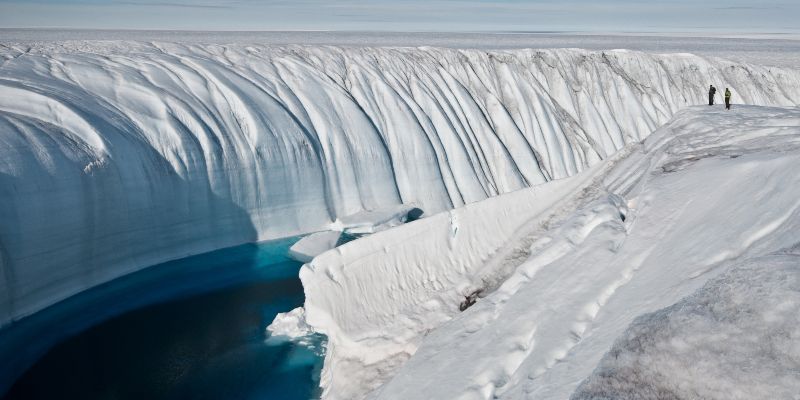 Global warming has caused extreme ice melting events in Greenland to become more frequent and more intense over the past 40 years according to new research, raising sea levels and flood risk worldwide.
Global warming has caused extreme ice melting events in Greenland to become more frequent and more intense over the past 40 years according to new research, raising sea levels and flood risk worldwide.Researchers Boost Human Mental Function With Brain Stimulation
- A specific human mental function linked to mental illness can be reliably enhanced using precisely targeted electrical stimulation;
- There are specific sub-parts of the internal capsule brain structure that are particularly effective for cognitive enhancement; and
- A closed-loop algorithm used as a controller was twice as effective than stimulating at random times.
Shipwreck Reveals Secrets Of 17th -Century Dutch Seafaring Domination: Batavia - Western Australia
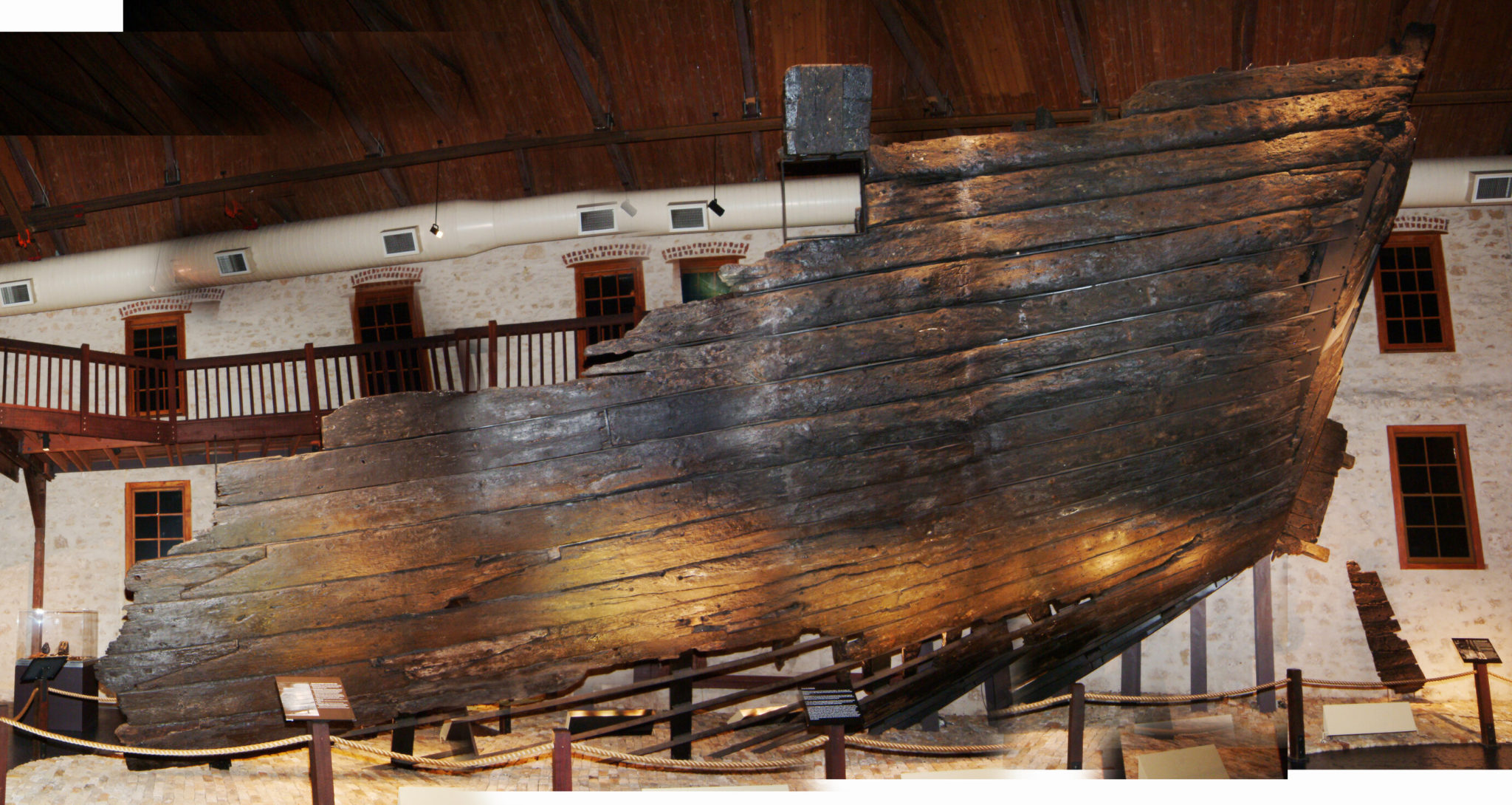
The 5:2 Diet: A Good Choice For Gestational Diabetes
 Weight loss after gestational diabetes can prevent the onset of type 2 diabetes. Yet finding the most effective way to lose weight and keep it off can be a challenge, especially for mothers with a new baby.
Weight loss after gestational diabetes can prevent the onset of type 2 diabetes. Yet finding the most effective way to lose weight and keep it off can be a challenge, especially for mothers with a new baby.Disclaimer: These articles are not intended to provide medical advice, diagnosis or treatment. Views expressed here do not necessarily reflect those of Pittwater Online News or its staff.